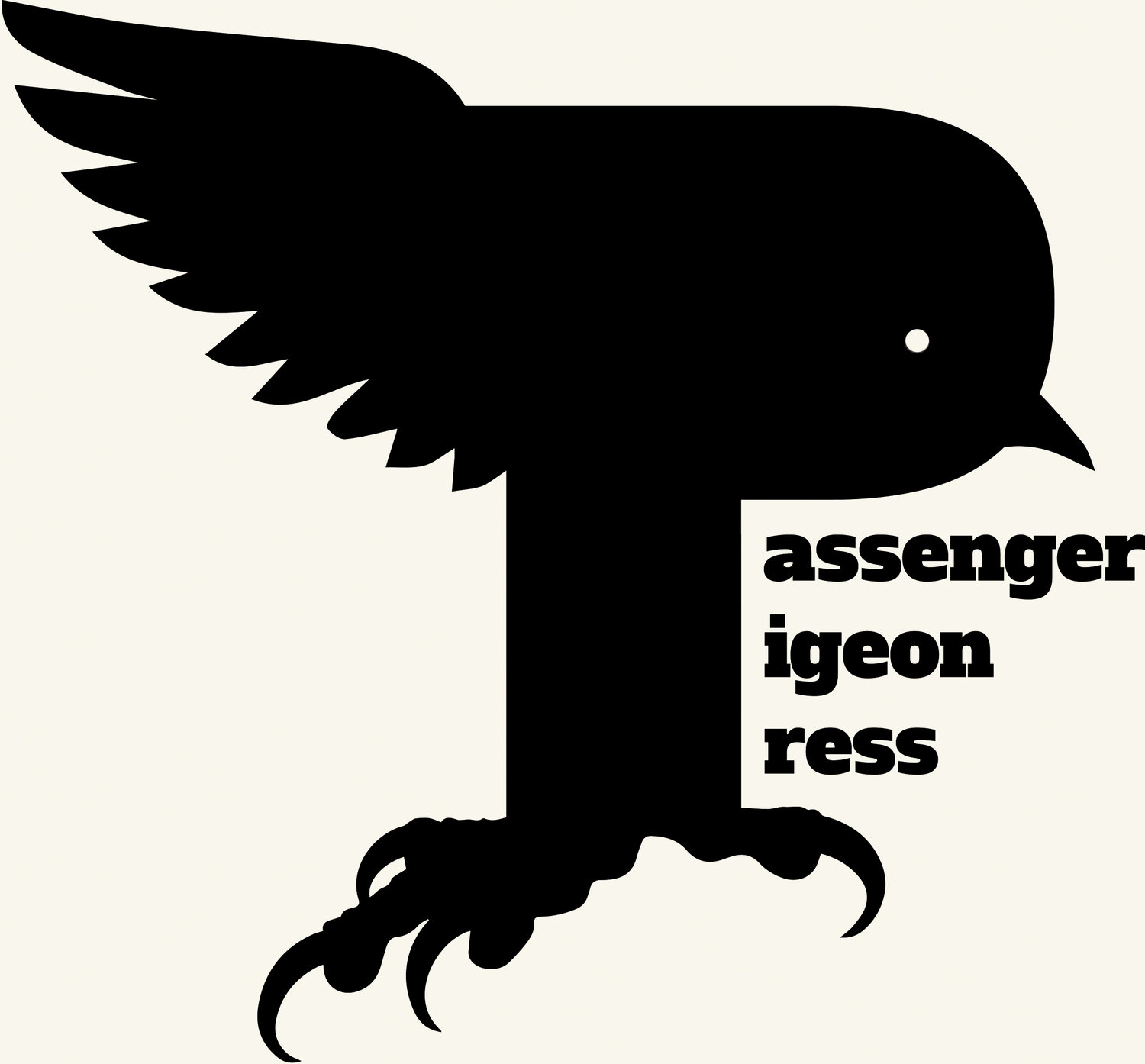ATOMIC TERRAIN
From the historic claiming of land as national territory, to the systematic contamination of landscapes, human impact on the natural world in the name of global security carries a tension between cultivation and control, peace and conflict. Atomic Terrain is an in-depth exploration of this tension as it pertains to the development of the atom bomb, and how the nuclear age transformed humanity’s relationship with the natural world. Atomic Terrain exists as a dialogue between two creative projects about plant life and the heavy nuclear stories they carry: B(L)OOM and How to Make a Bomb. By pairing art and research, Atomic Terrain offers nature – the humble existence of plants around us – as an alternative access point to our nuclear past, and encourages us to reckon with the ways this history reverberates in today’s geopolitical climate and cultural landscape. Atomic Terrain is a collaboration between Tammy Nguyen, Warren Harper, Lovely Umayam (Bombshelltoe) and Gabriella Hirst.
How to Make a Bomb
Pamphlet by Tammy Nguyen X Atomic Terrain
Project by Gabriella Hirst
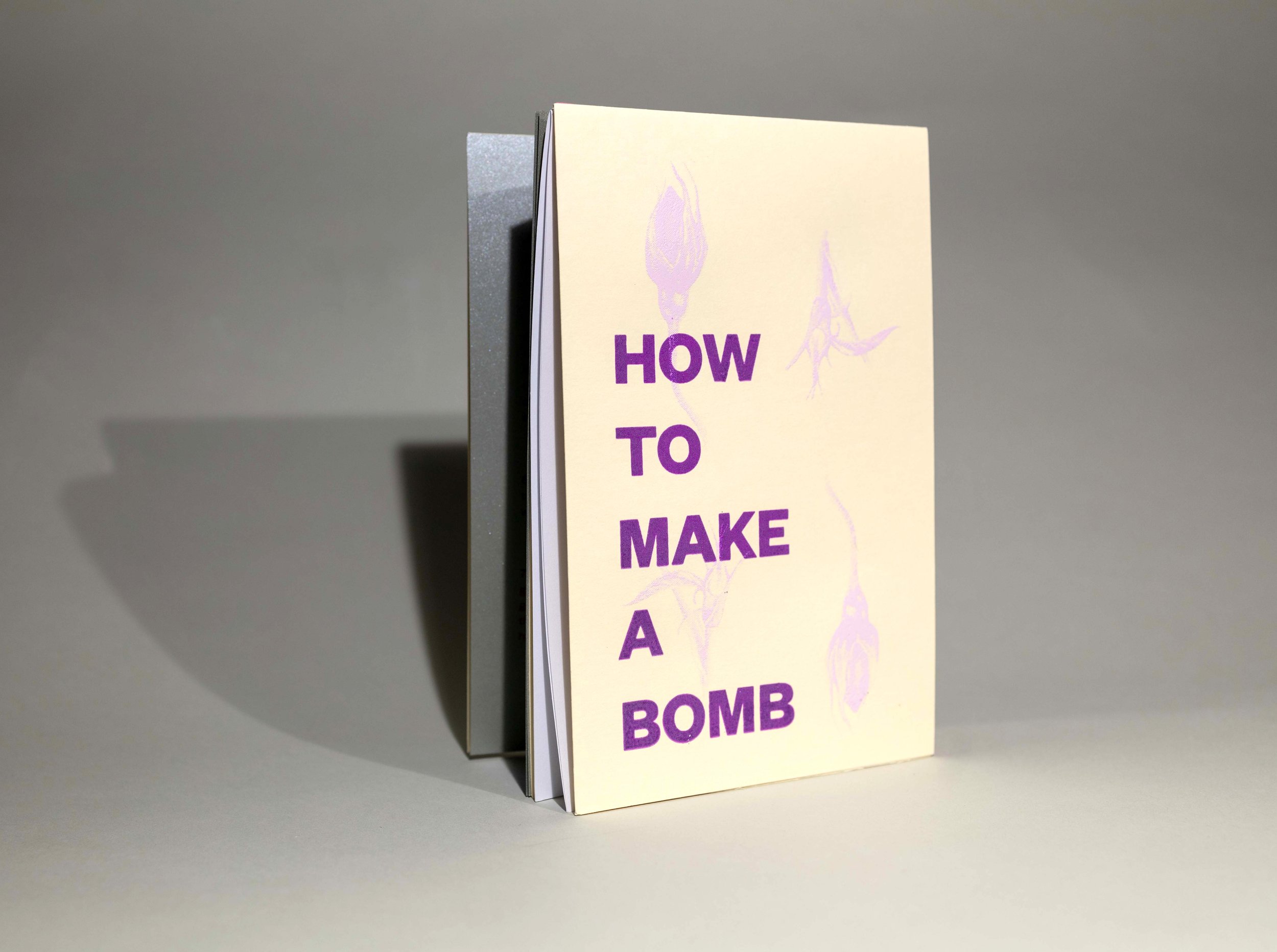
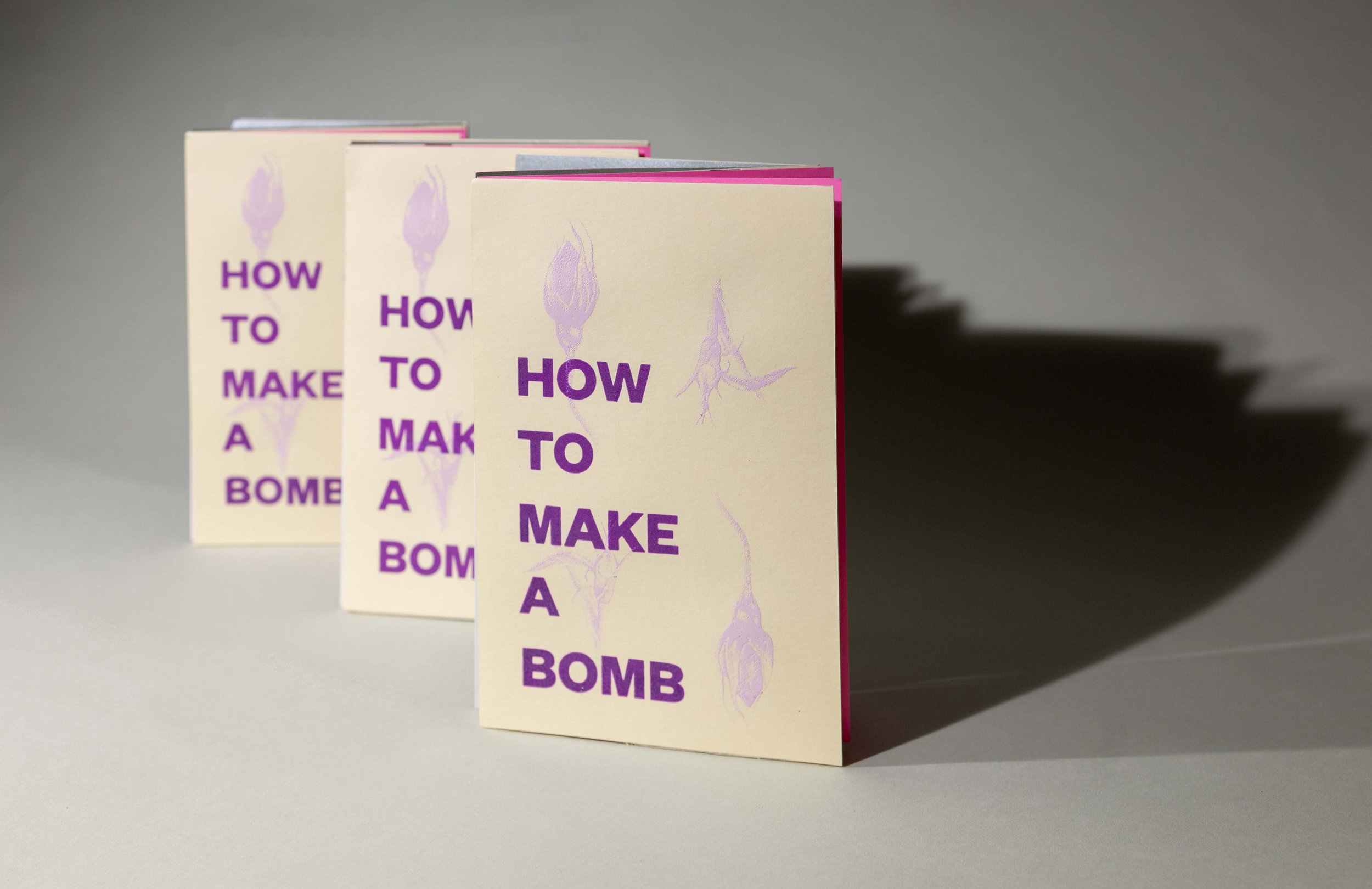
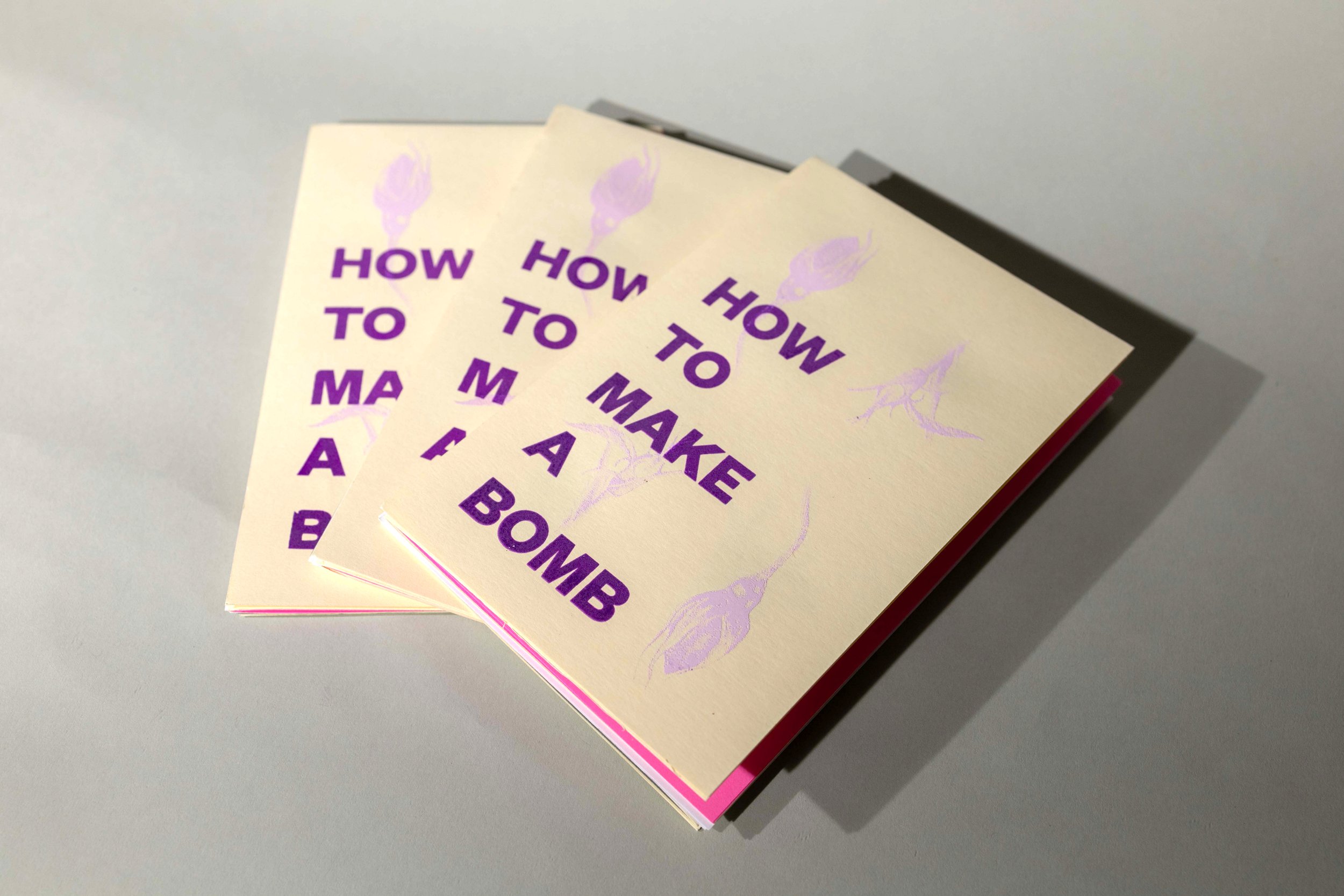
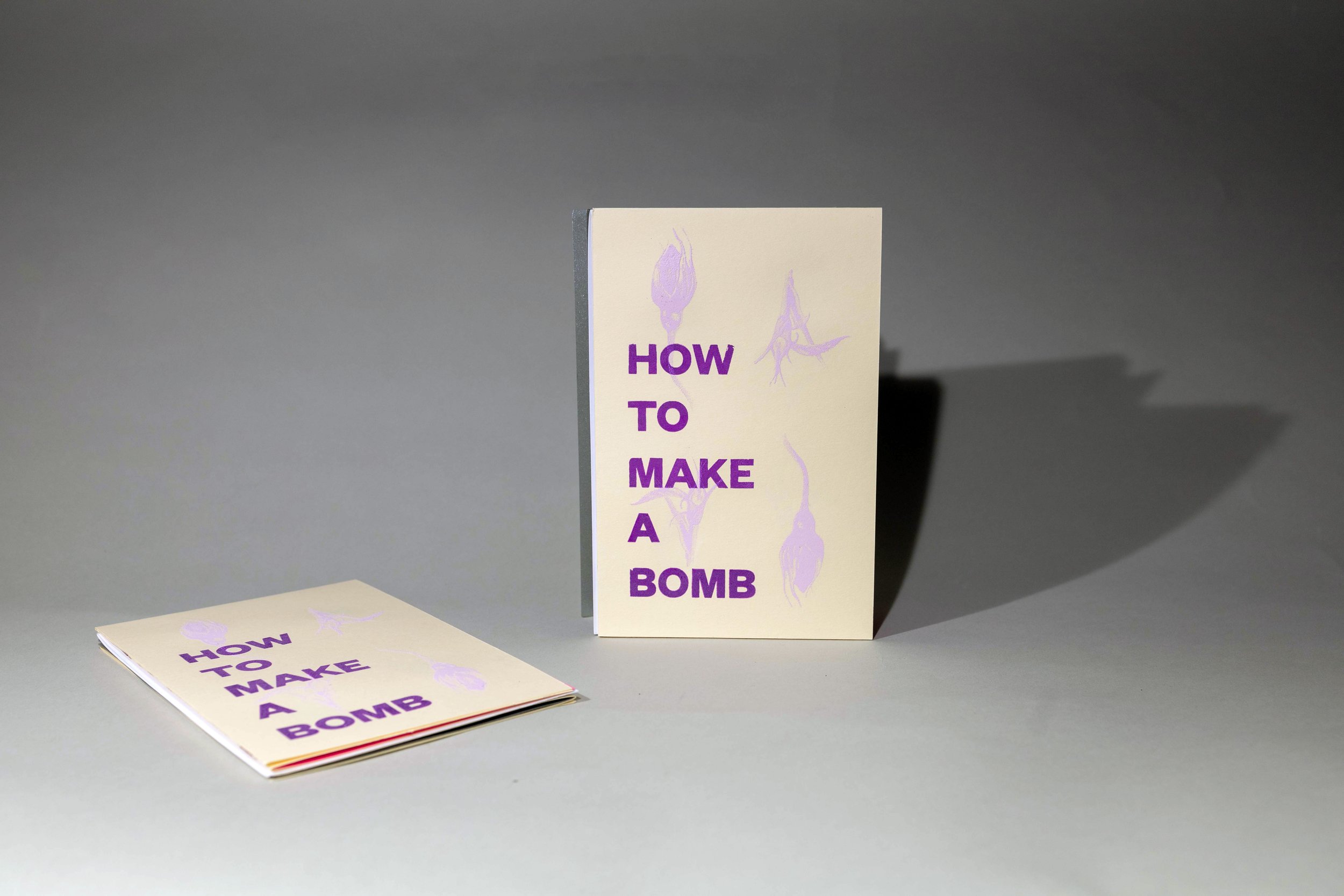
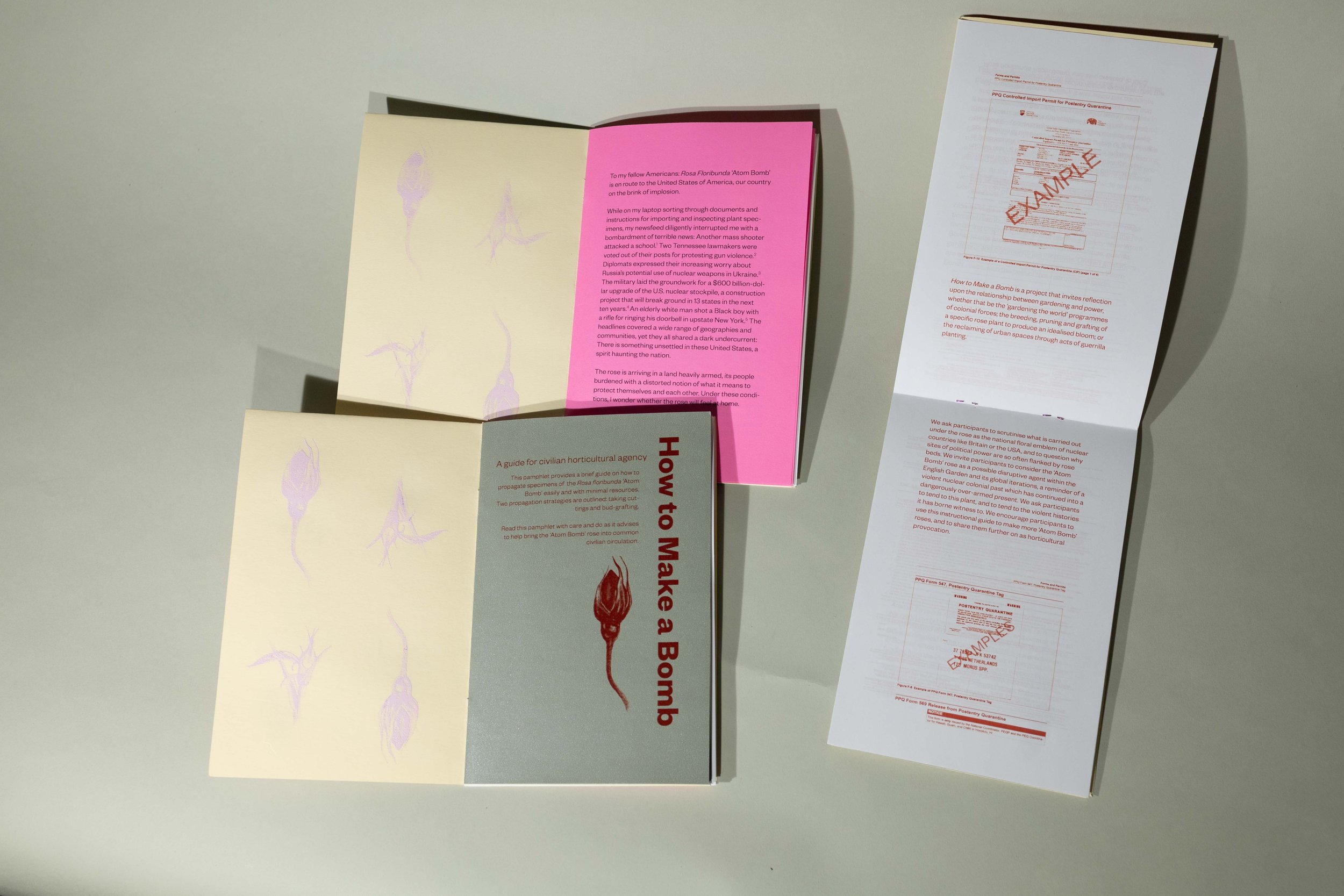

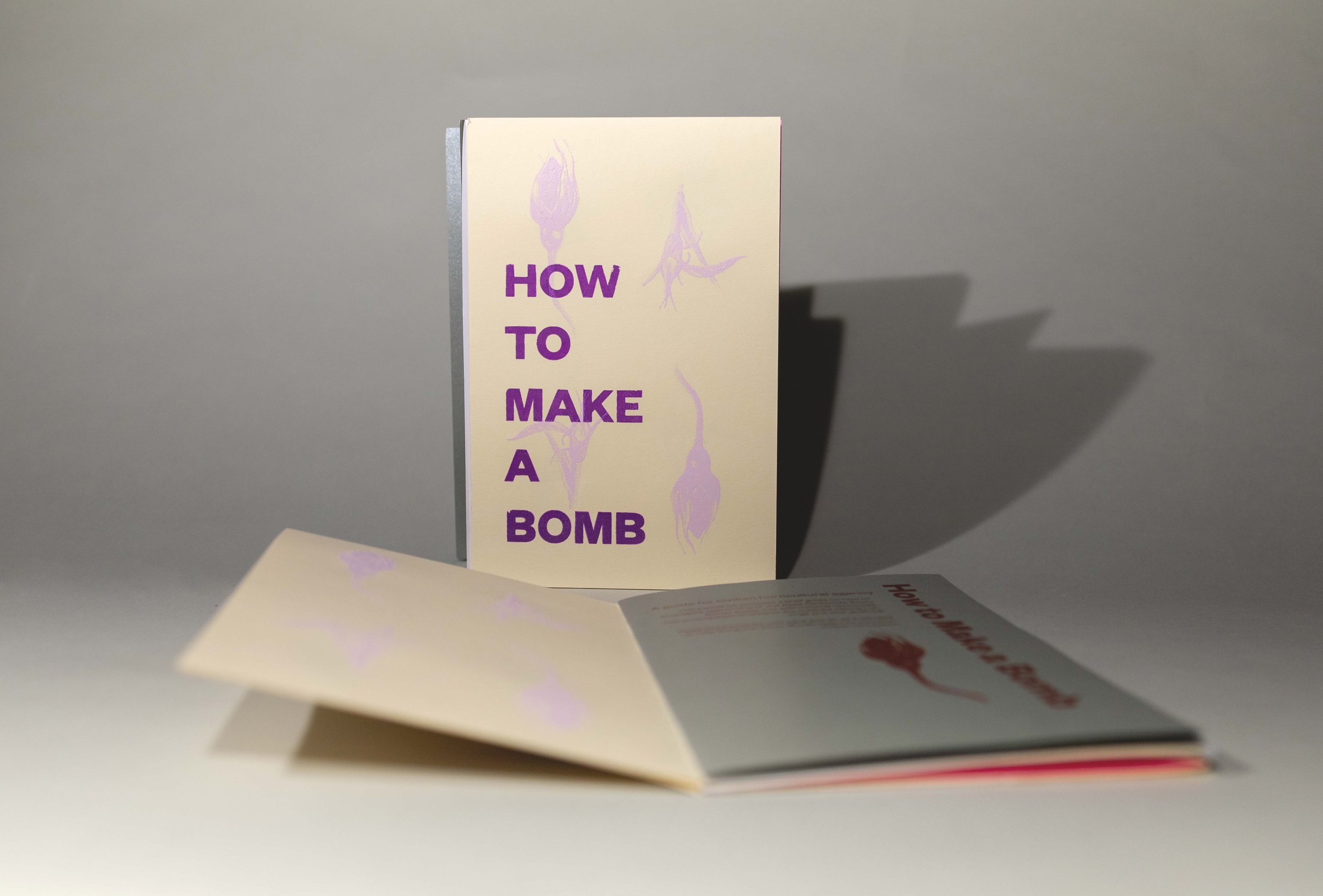
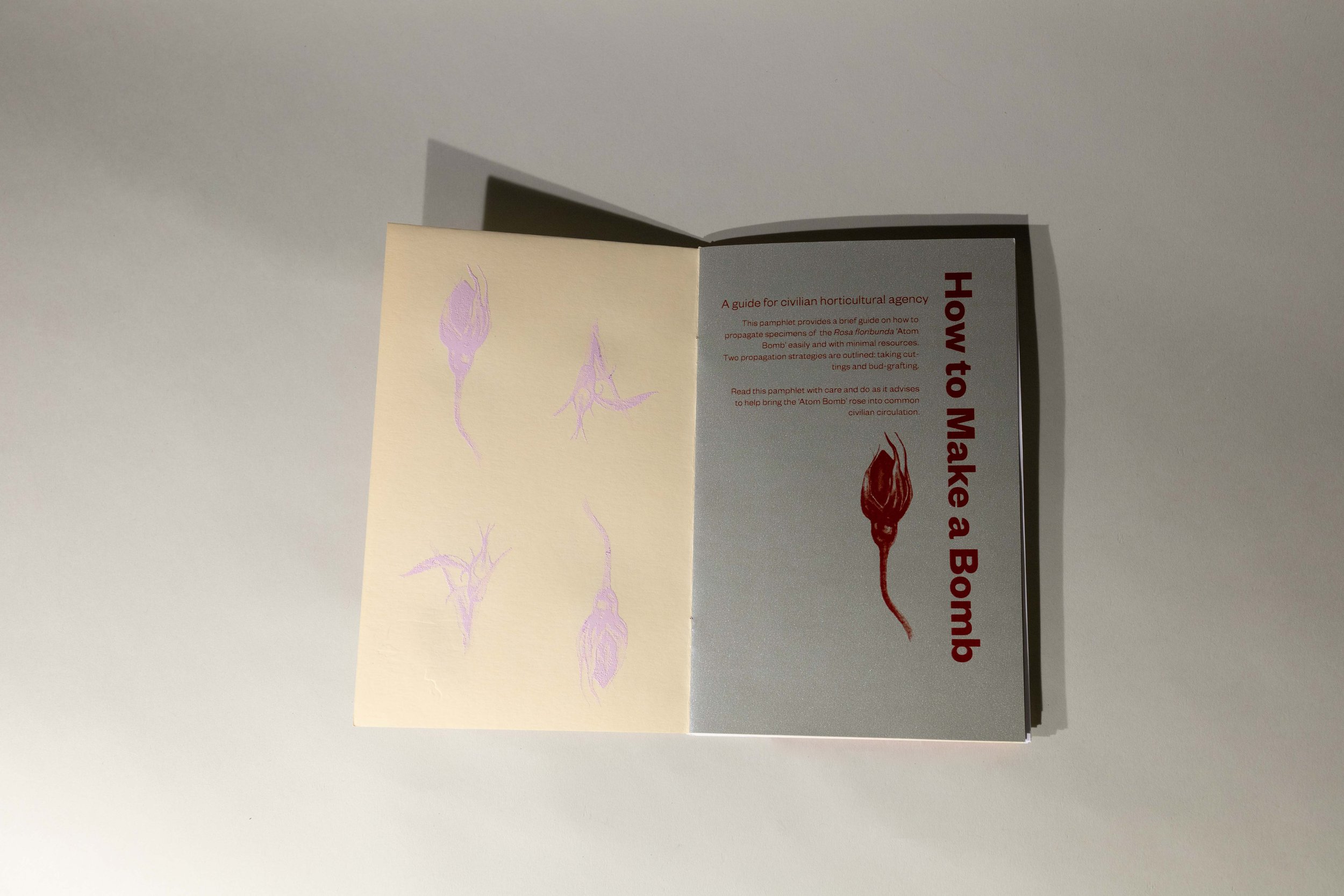
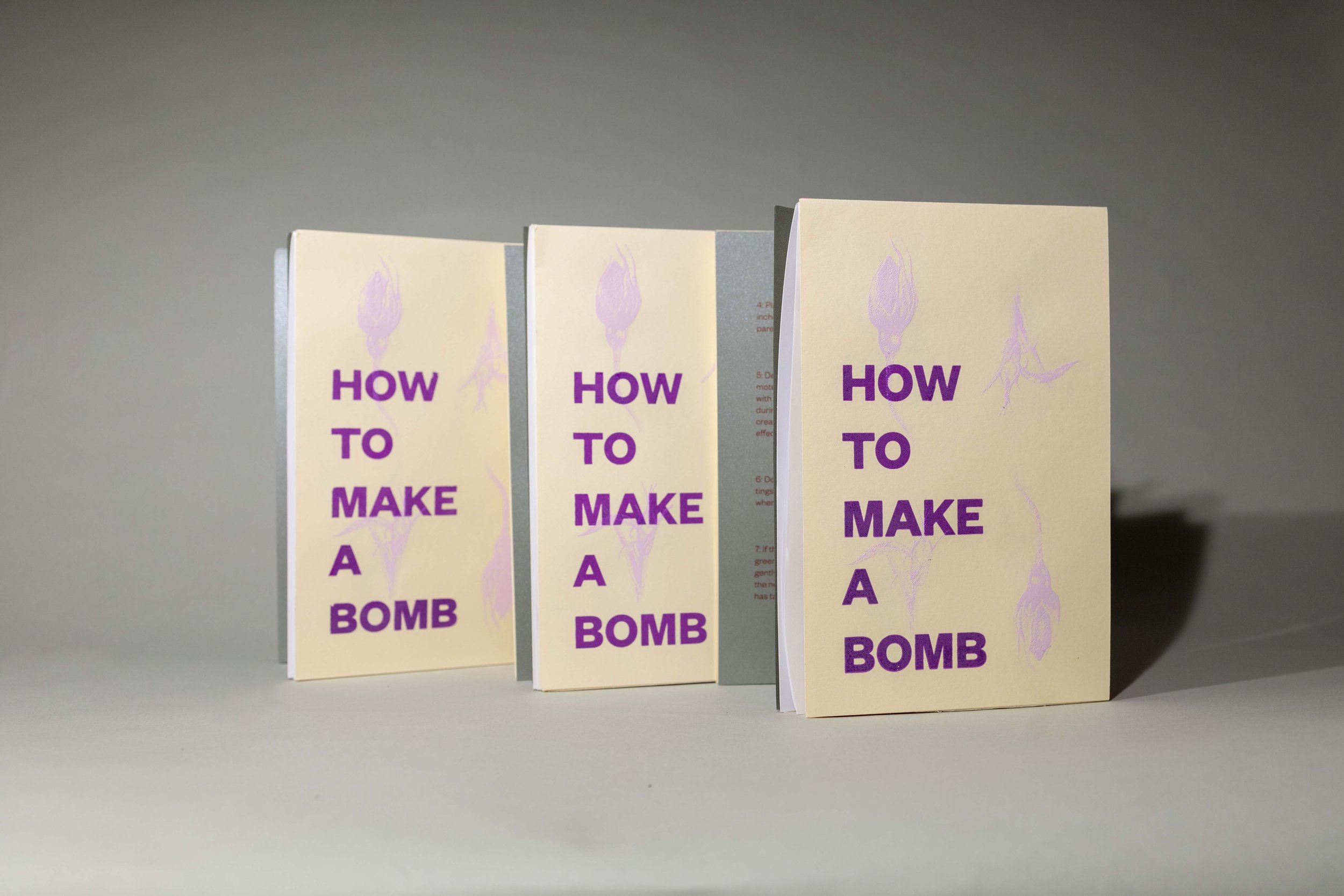
How to Make a Bomb is an artwork by Gabriella Hirst, a durational gardening project initiated in 2016, examining the structural connections between horticulture, state power, and nuclear colonialism. The project centres on a rare species of garden rose, the Rosa floribunda ‘Atom Bomb’, which was developed by German rose breeder Reimer Kordes in 1953 during the height of post-war nuclear fervour. Through processes of grafting and taking cuttings, How to Make a Bomb sees artist Gabriella Hirst propagate new specimens of this rose from one of the few remaining plants of the original species, and teaches others how to do the same through “How to Make a Bomb” public workshops and printed manuals. Since August 2019, the “How to Make a Bomb” project has been hosted by The Old Waterworks (TOW), in collaboration with curator Warren Harper. The artist book How to Make a Bomb (2023) was produced by Passenger Pigeon Press especially for the newest chapter of the How to Make a Bomb project, which saw Atomic Terrain importing the Rosa floribunda 'Atom Bomb' into a USA context.
The Passenger Pigeon Press How to Make a Bomb pamphlet was designed by Tammy Nguyen, features an essay by Lovely Umayam, as well as an instructive rose-guide by Gabriella Hirst, and official documents amassed during the USA Atom Bomb rose importation process. The pamphlet was produced by Holly Greene, Daniella Porras, Jane Lillard, and Chance Lockard. How to Make a Bomb was produced using silkscreen printing, full-color photocopy, and single-copy photocopy.
B(L)OOM
by Lovely Umayam and Tammy Nguyen
a project of Bombshelltoe and Passenger Pigeon Press
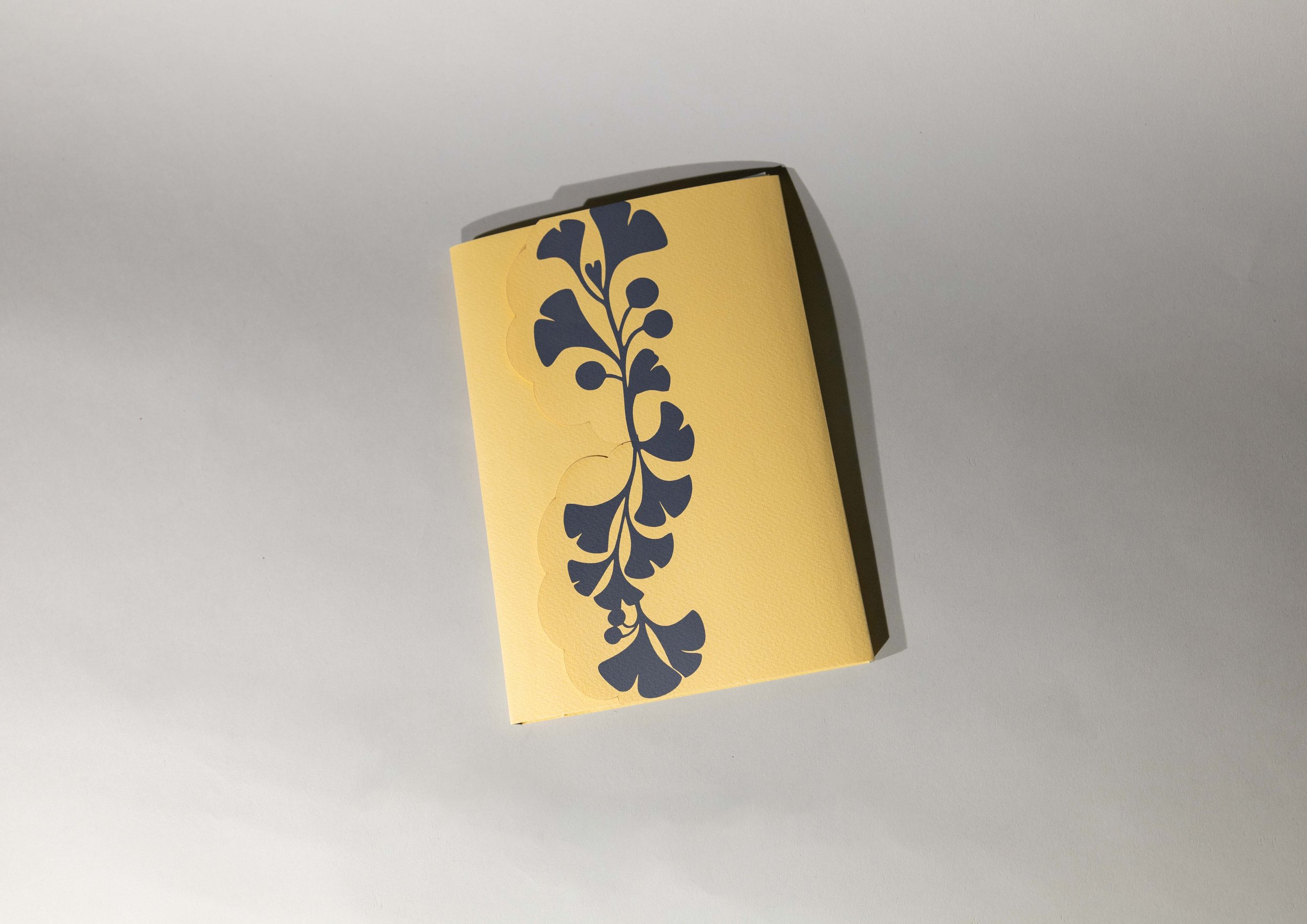
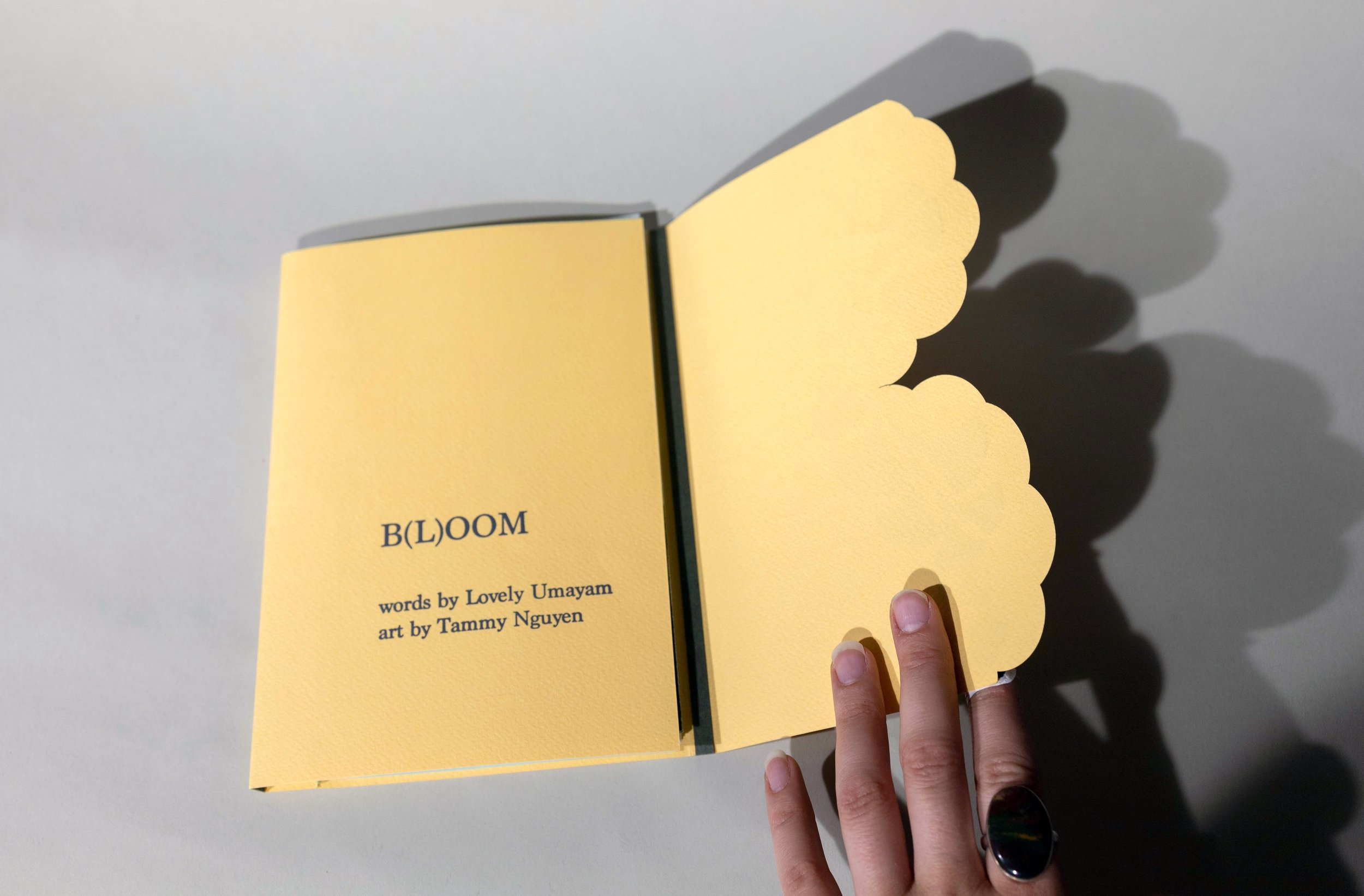
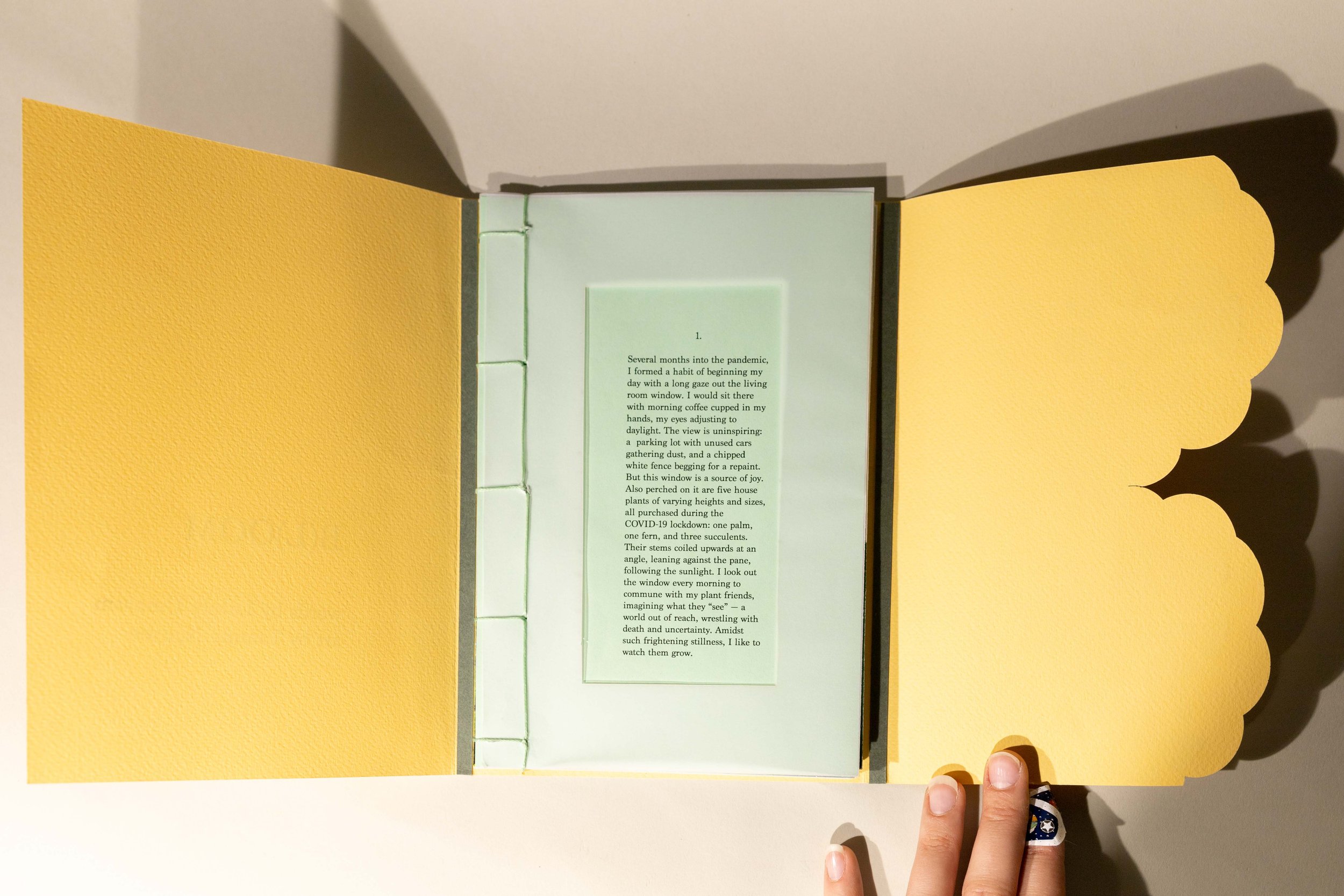
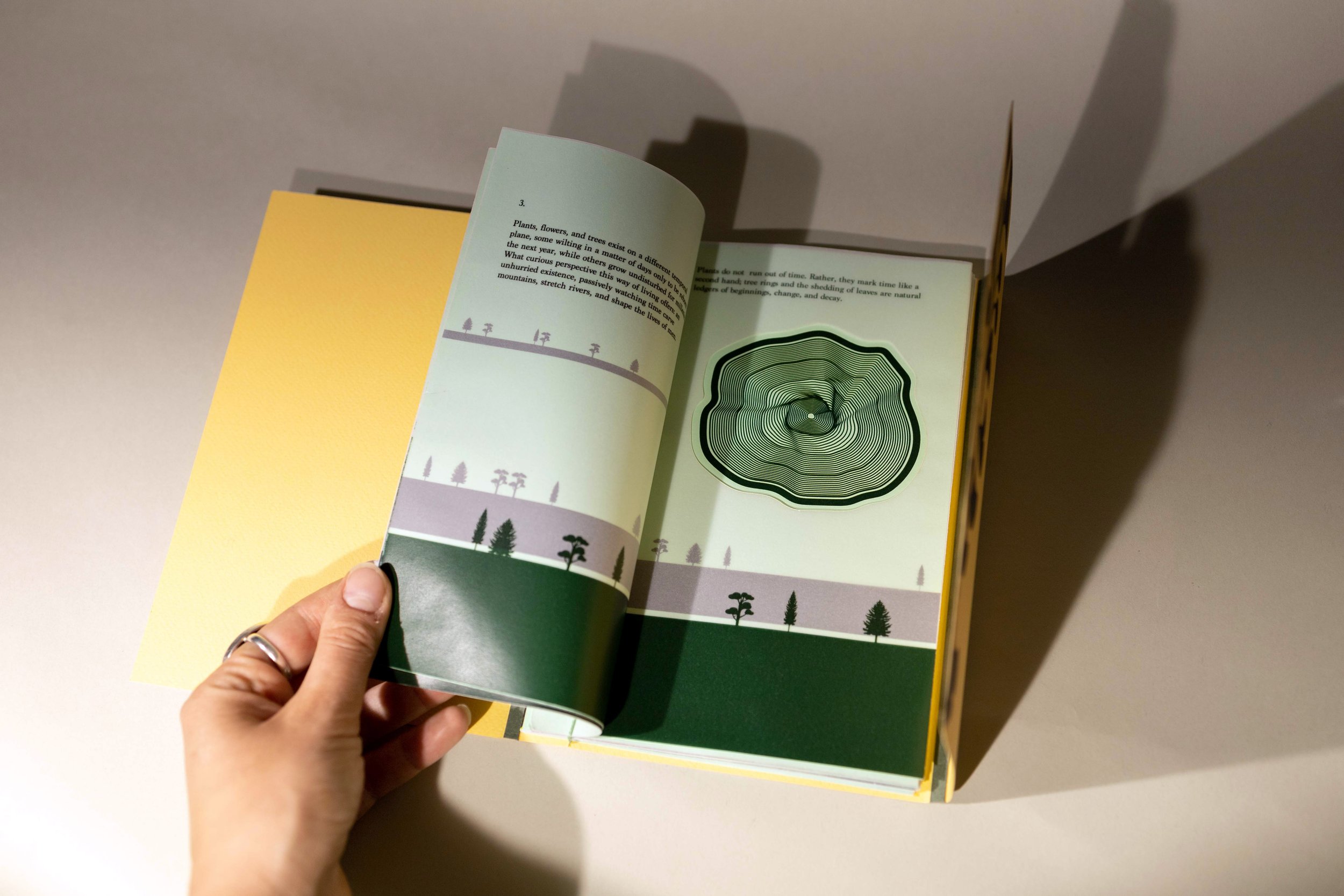
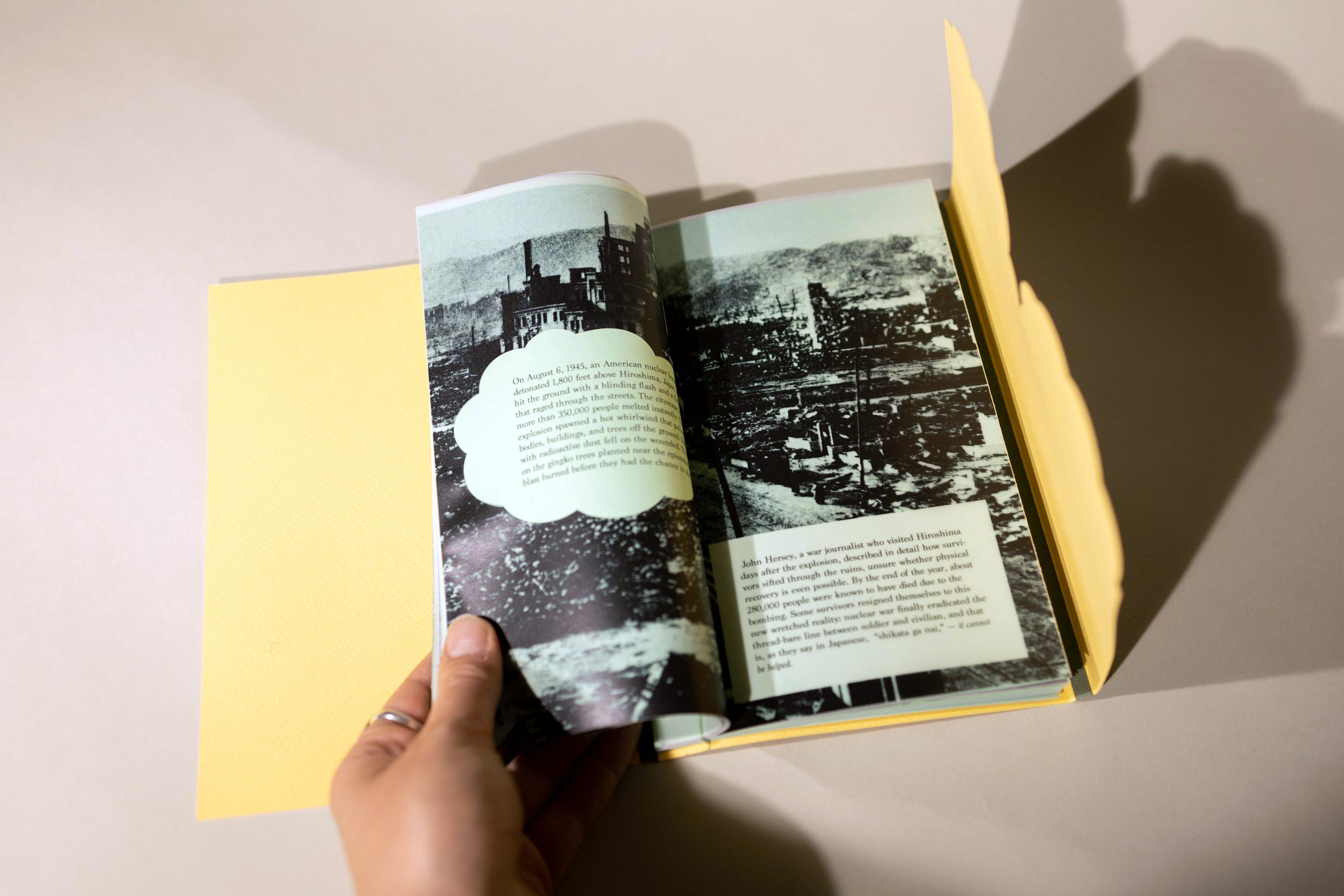
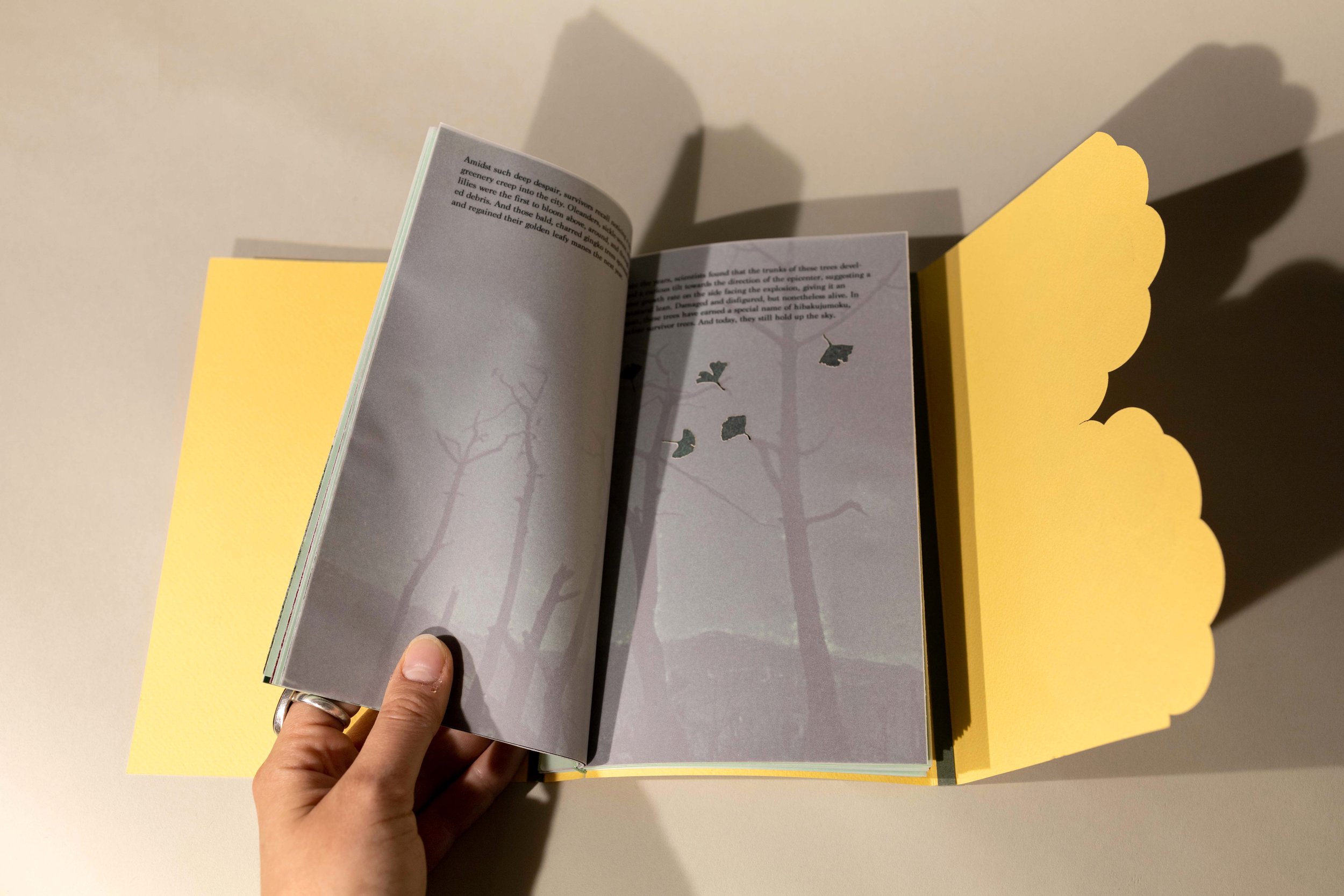
B(L)OOM, written by Lovely Umayam and published by Passenger Pigeon Press (Tammy Nguyen) is about the retelling of history from the perspective of plants that survived and communities that rebuilt amid the aftermath of nuclear destruction (gingko trees in Japan) or persevered under nuclear threat (sunflowers in Ukraine). Through historical research, creative nonfiction, and hand-made artbook, B(L)OOM weaves a story around a single powerful image: life growing out of rubble.
B(L)OOM was originally published in 2021 and is being produced this year as an extension of the Atomic Terrain project. This is an ongoing edition.
B(L)OOM was written by Lovely Umayam, designed and produced by Tammy Nguyen with assistance from Holly Greene and Daniella Porras. B(L)OOM was produced using full-color photocopy, hot stamping, laser cutting, and hand-sewn binding.
ATOMIC SUBLIME
The Atom, the Sublime, and the American Southwest
by Lovely Umayam and Tammy Nguyen
a project of Bombshelltoe and Passenger Pigeon Press
This book is dedicated to the sunrises and the sunsets in the American Southwest. May we continue to honor and protect this land and its people.
Some things in this world hold so much power and splendor that they shake the soul. They are visual manifestations of pure awe that it leaves the mind unmoored, marooned between the sensations of pleasure and terror. Those who are lucky to encounter such a sight often struggle to describe their experience to others – it transcends words, it cannot be adequately expressed in any language. Others go so far to say that it conjures the spiritual, the closest they’ll ever get to feeling the presence of God.
Scholars of our time call this phenomenon the sublime.
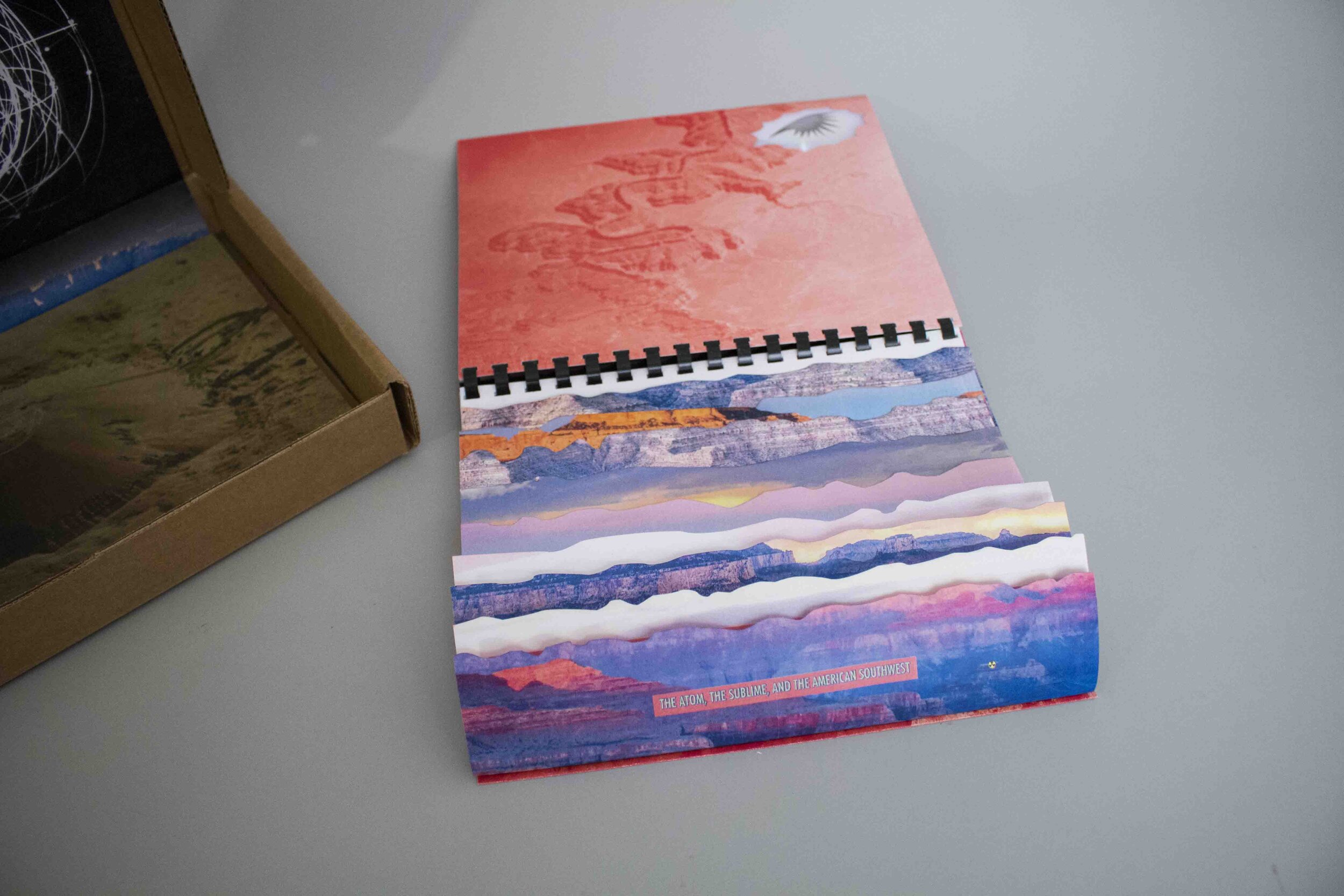
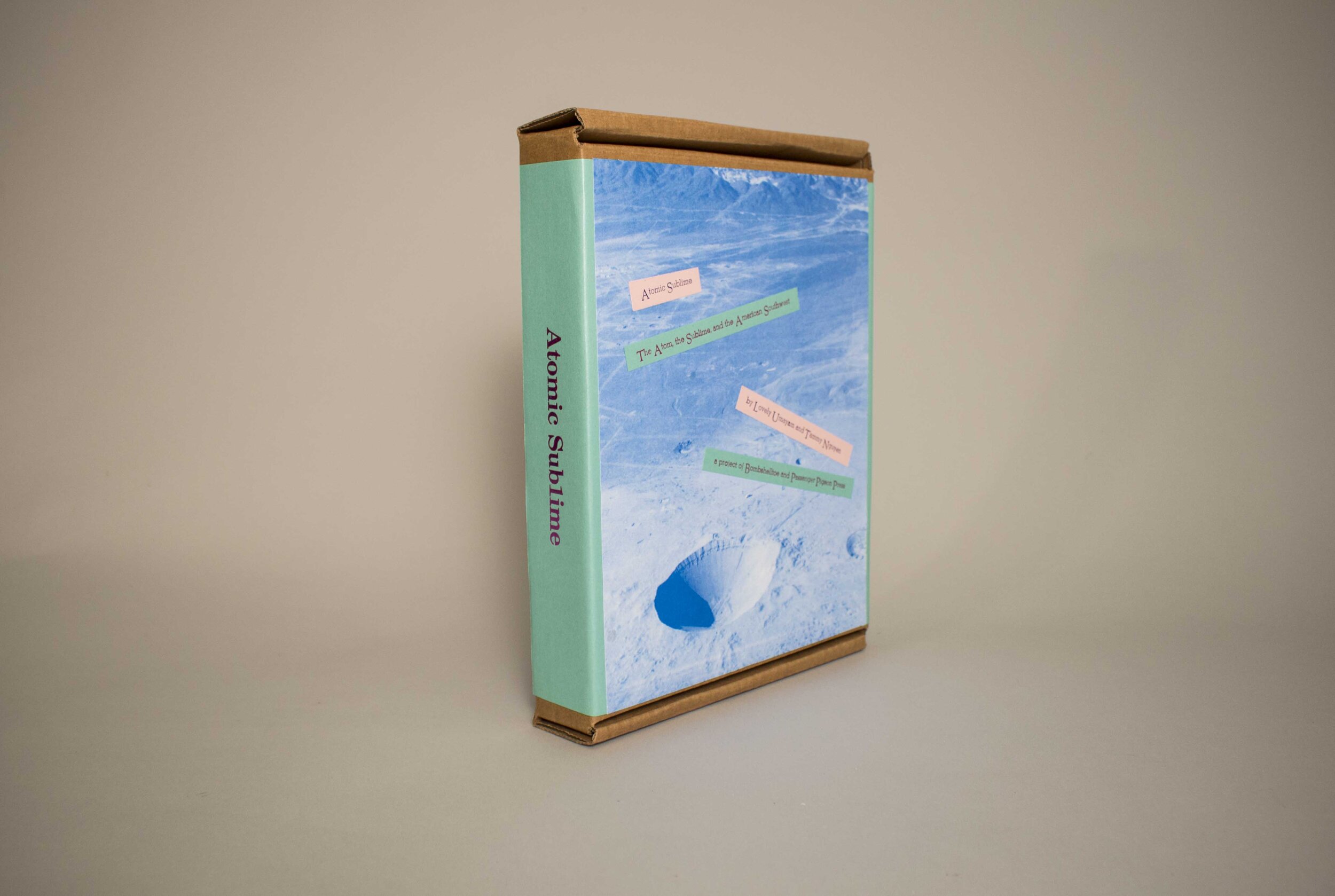
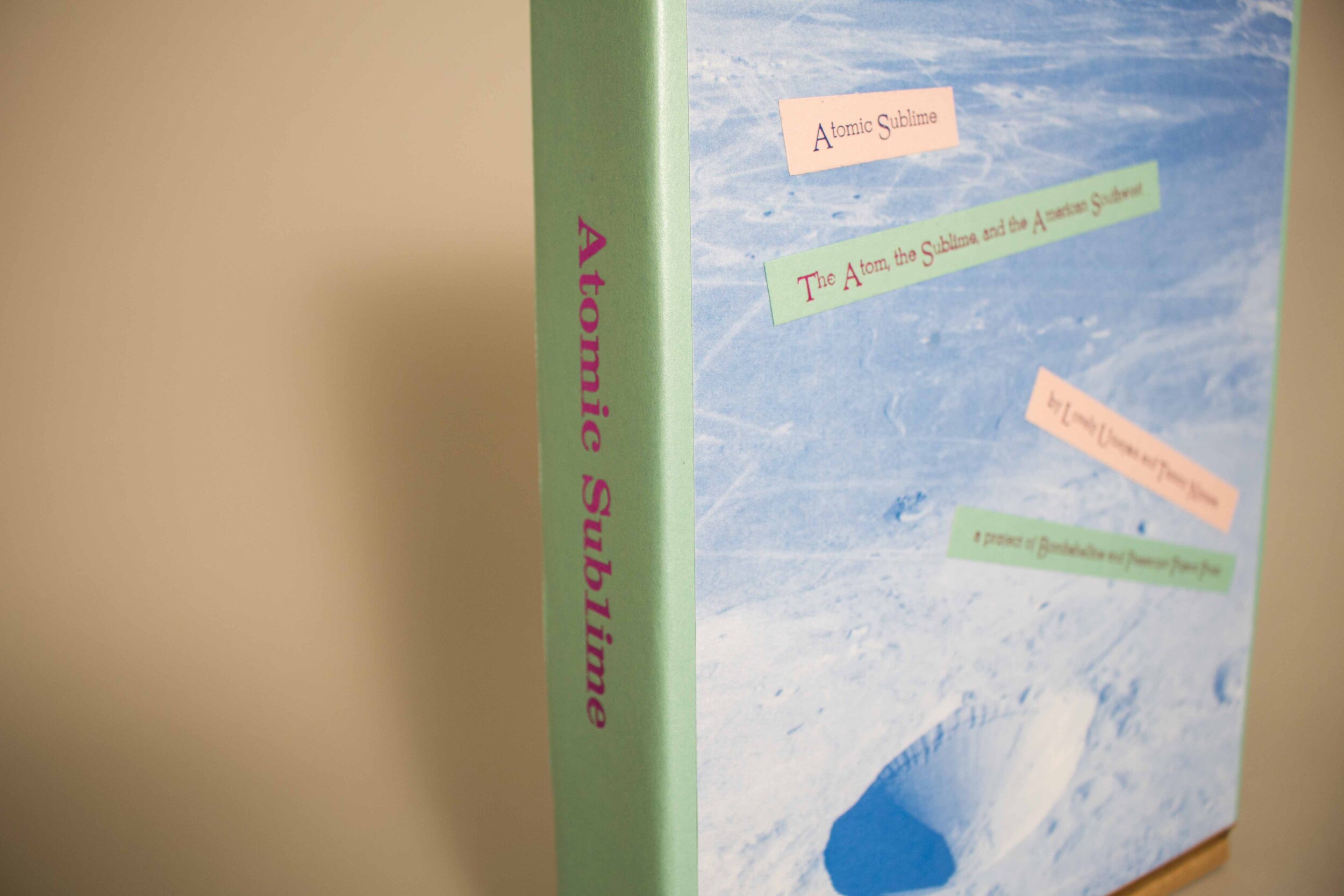

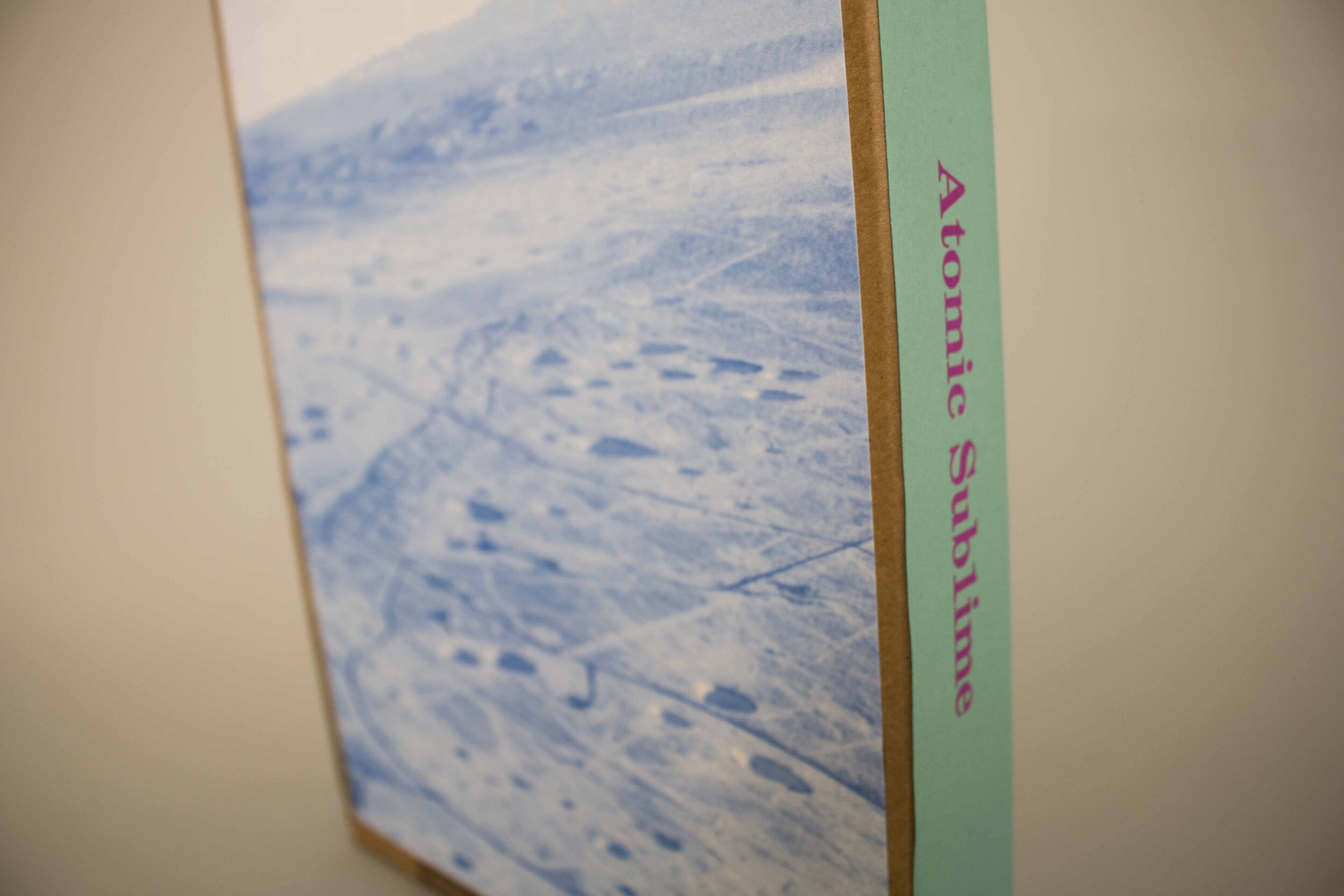
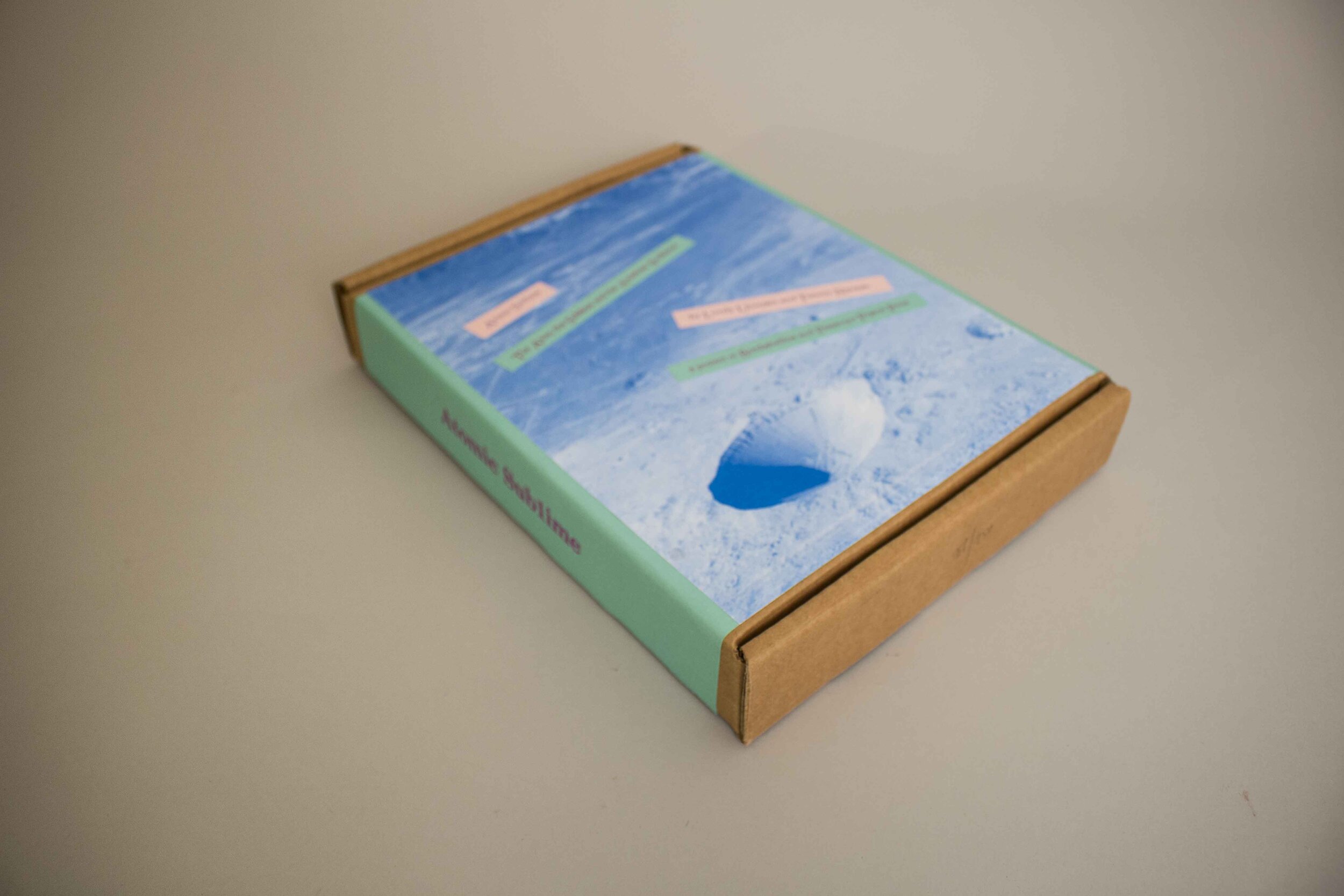

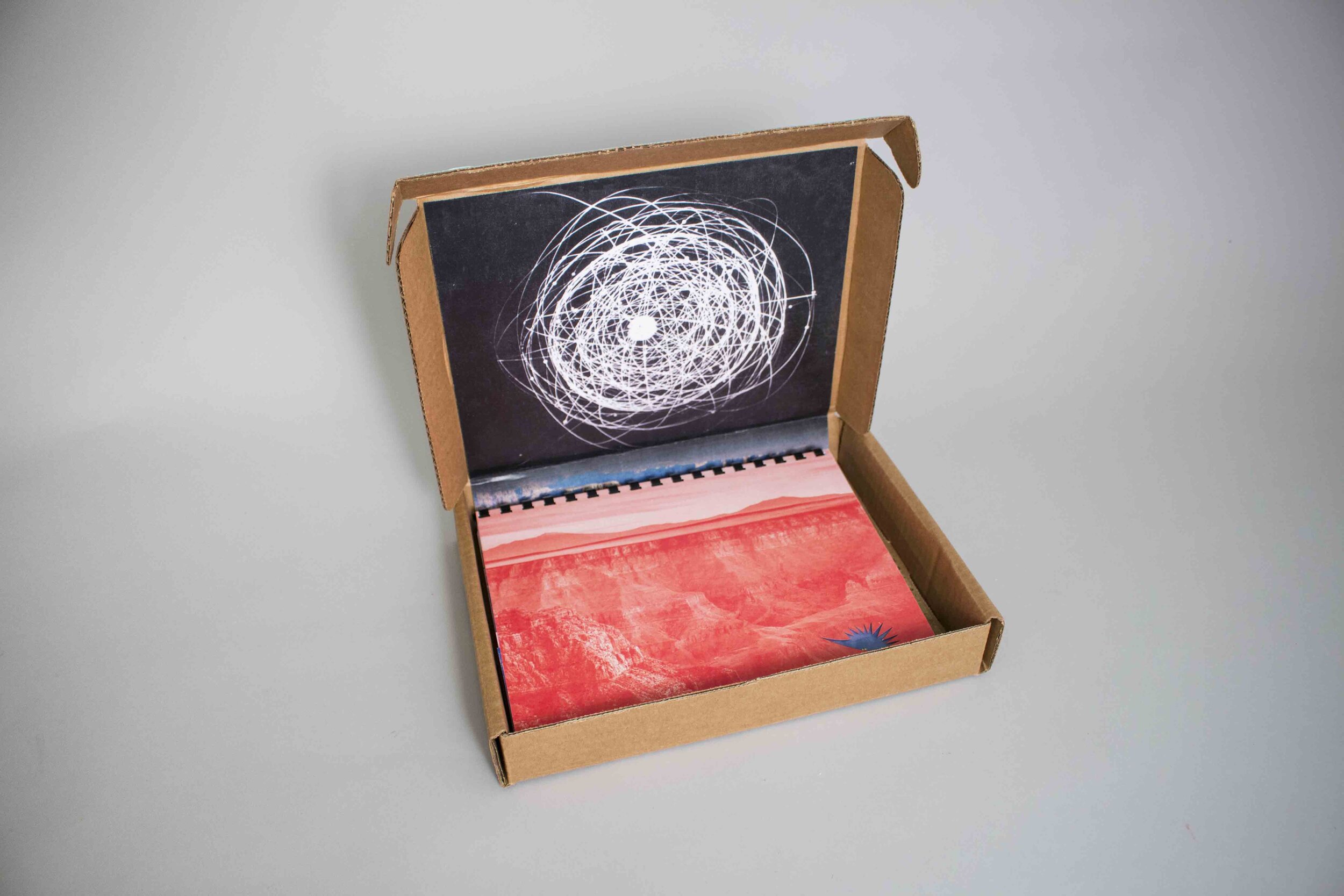
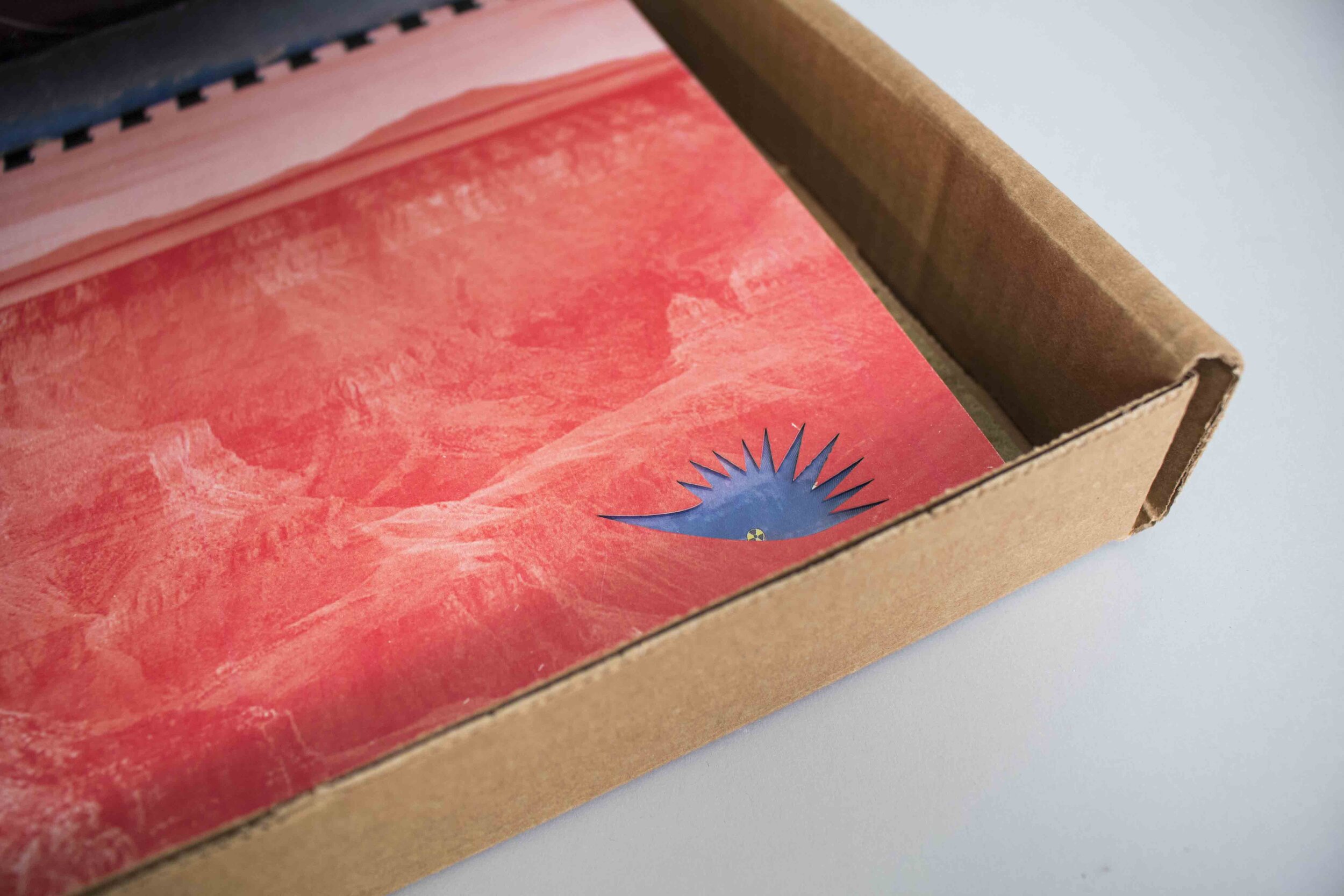
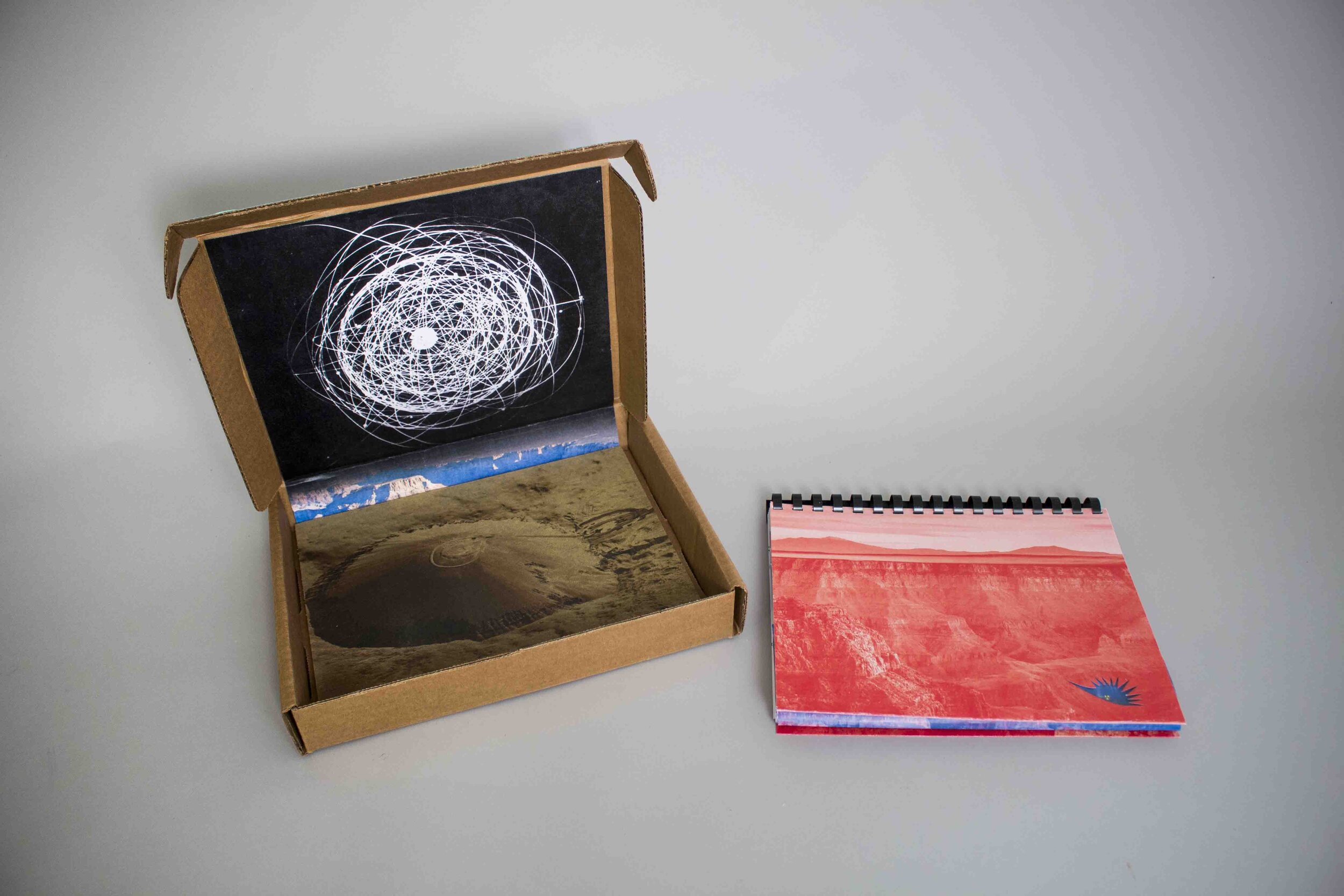
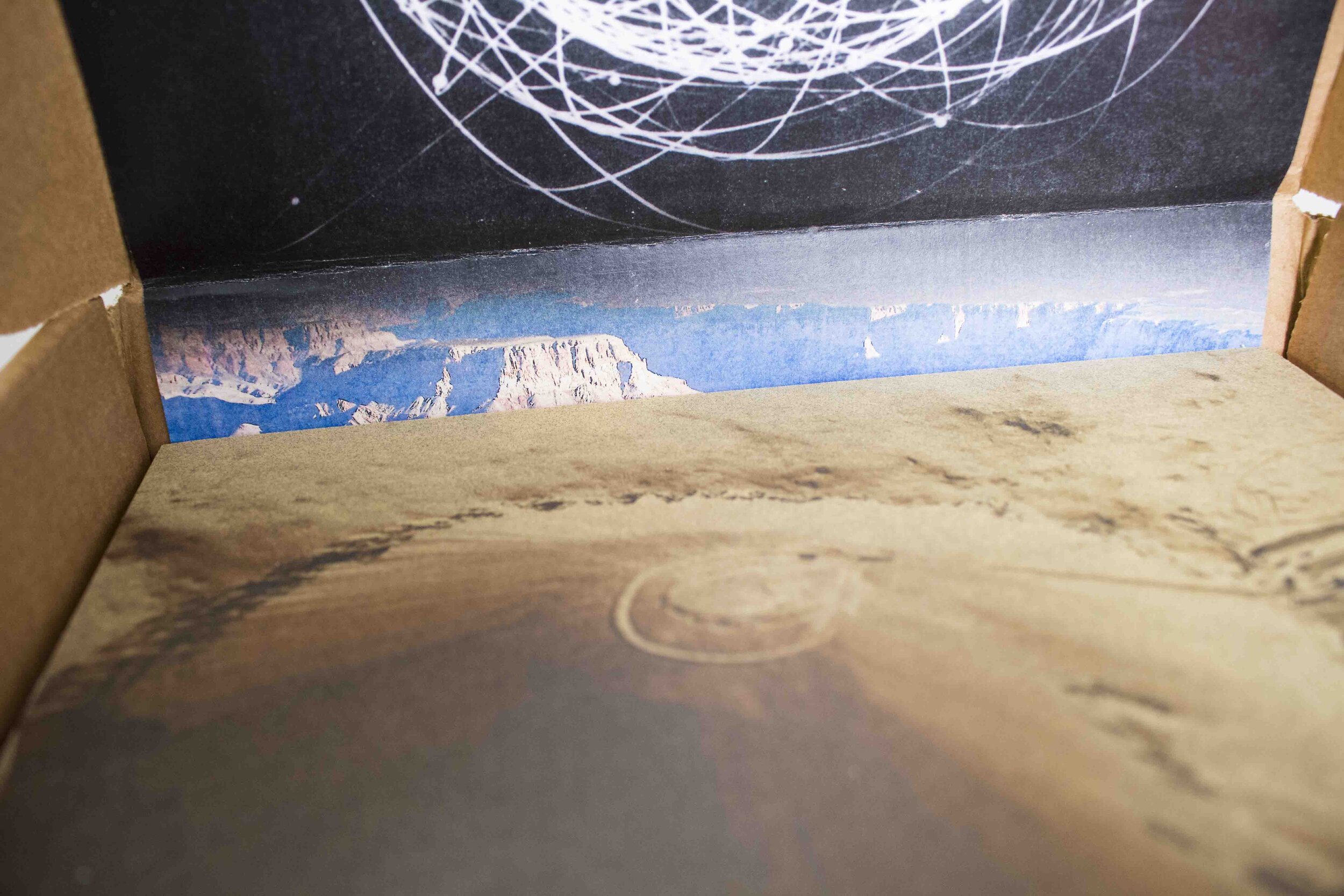
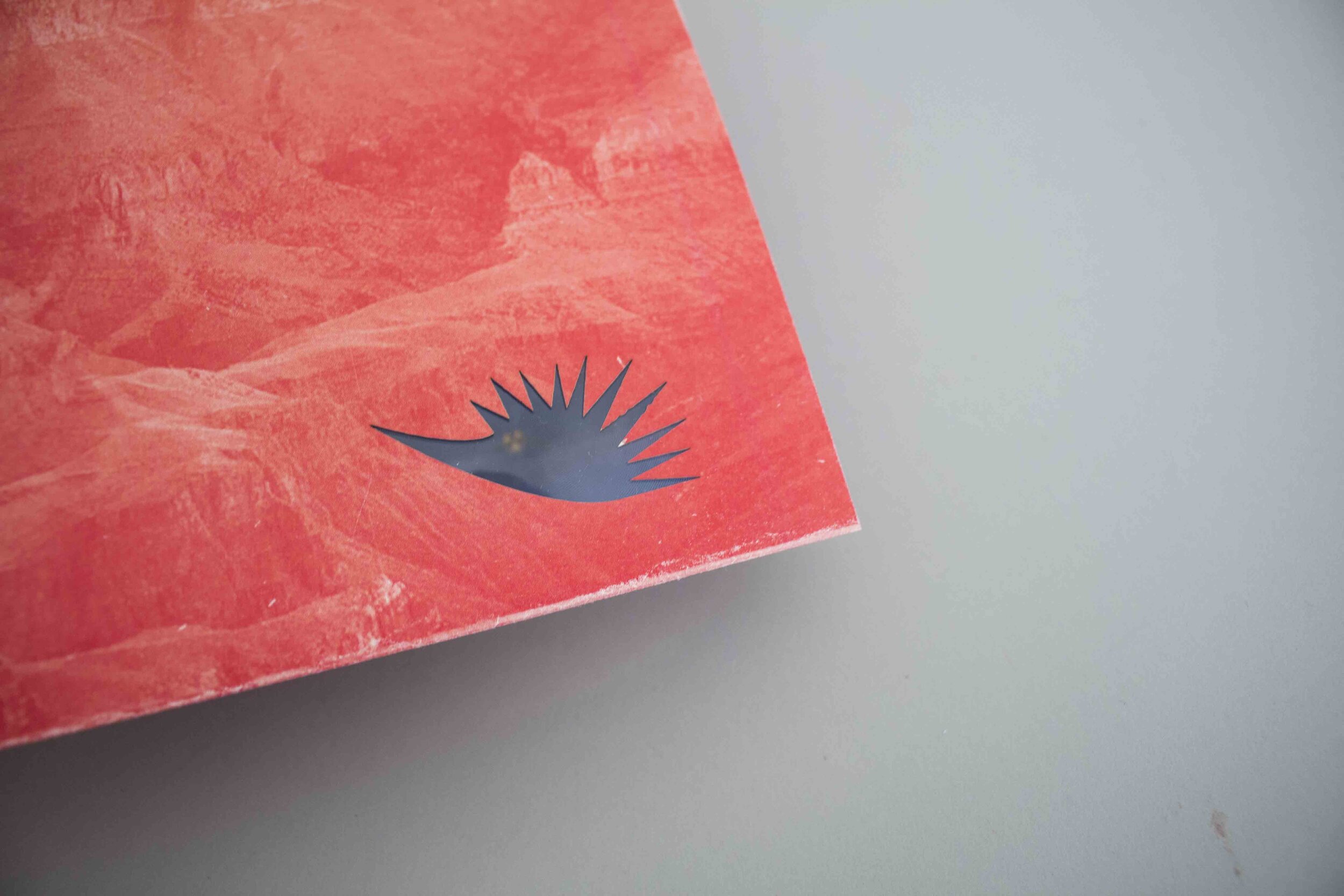
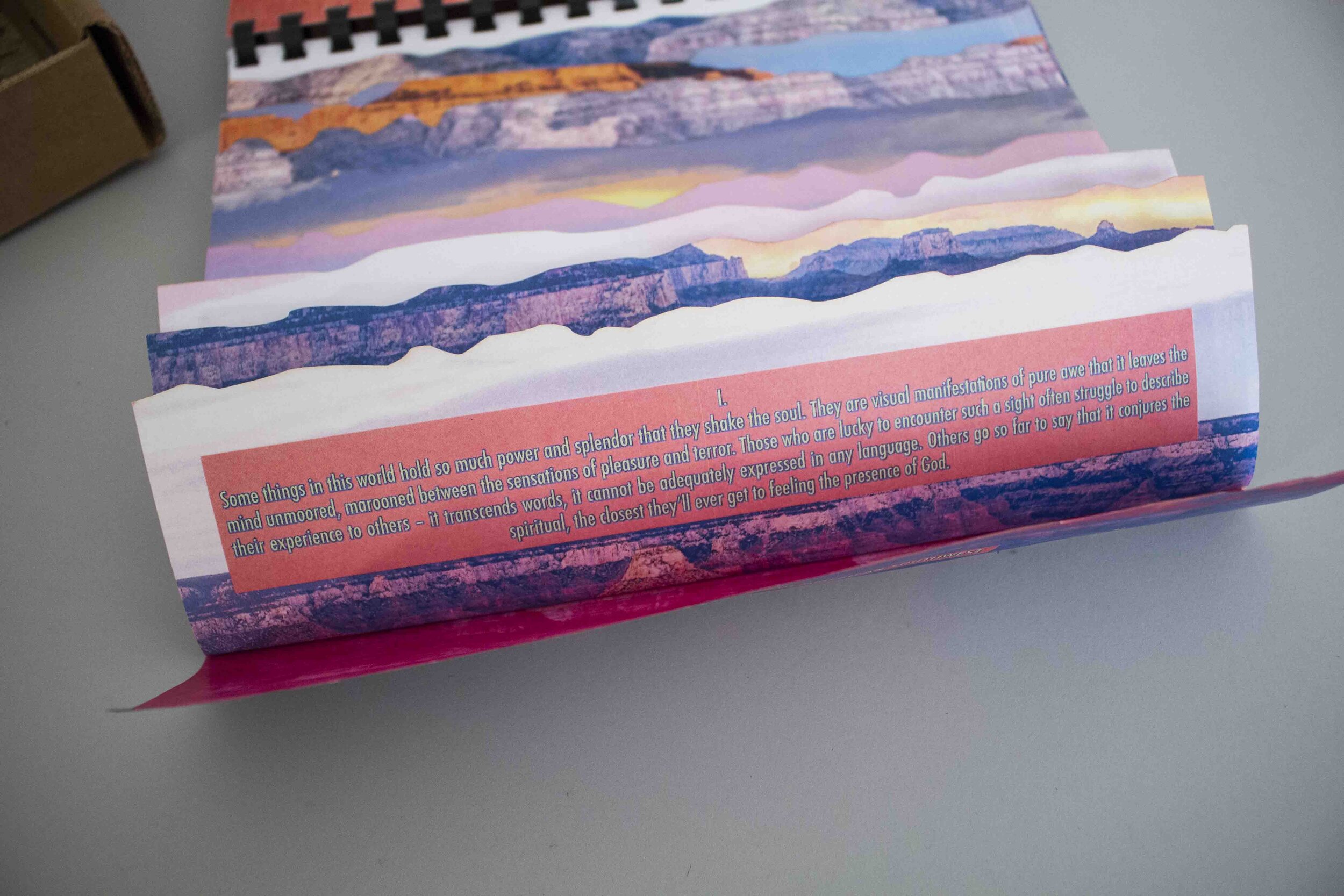
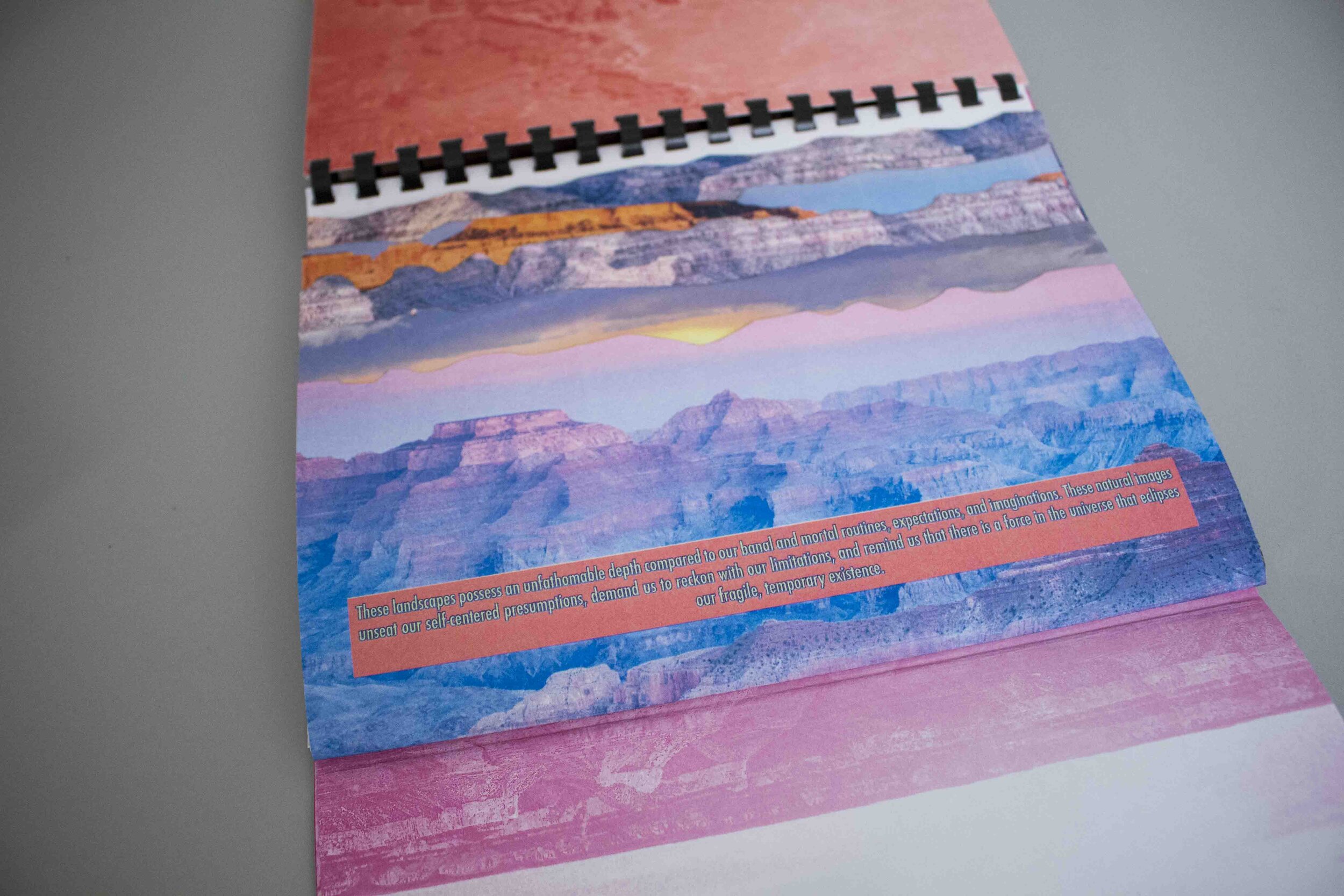
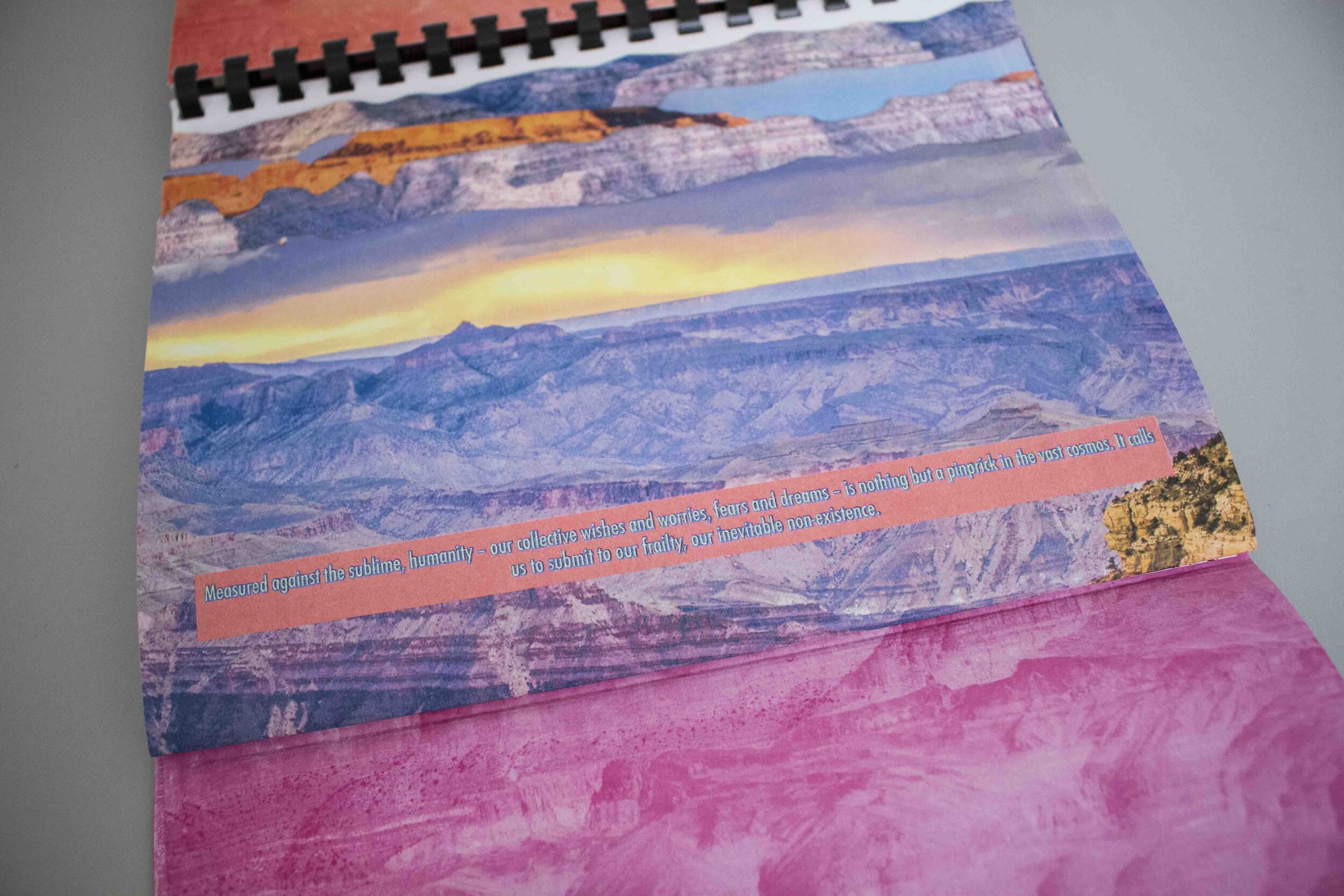
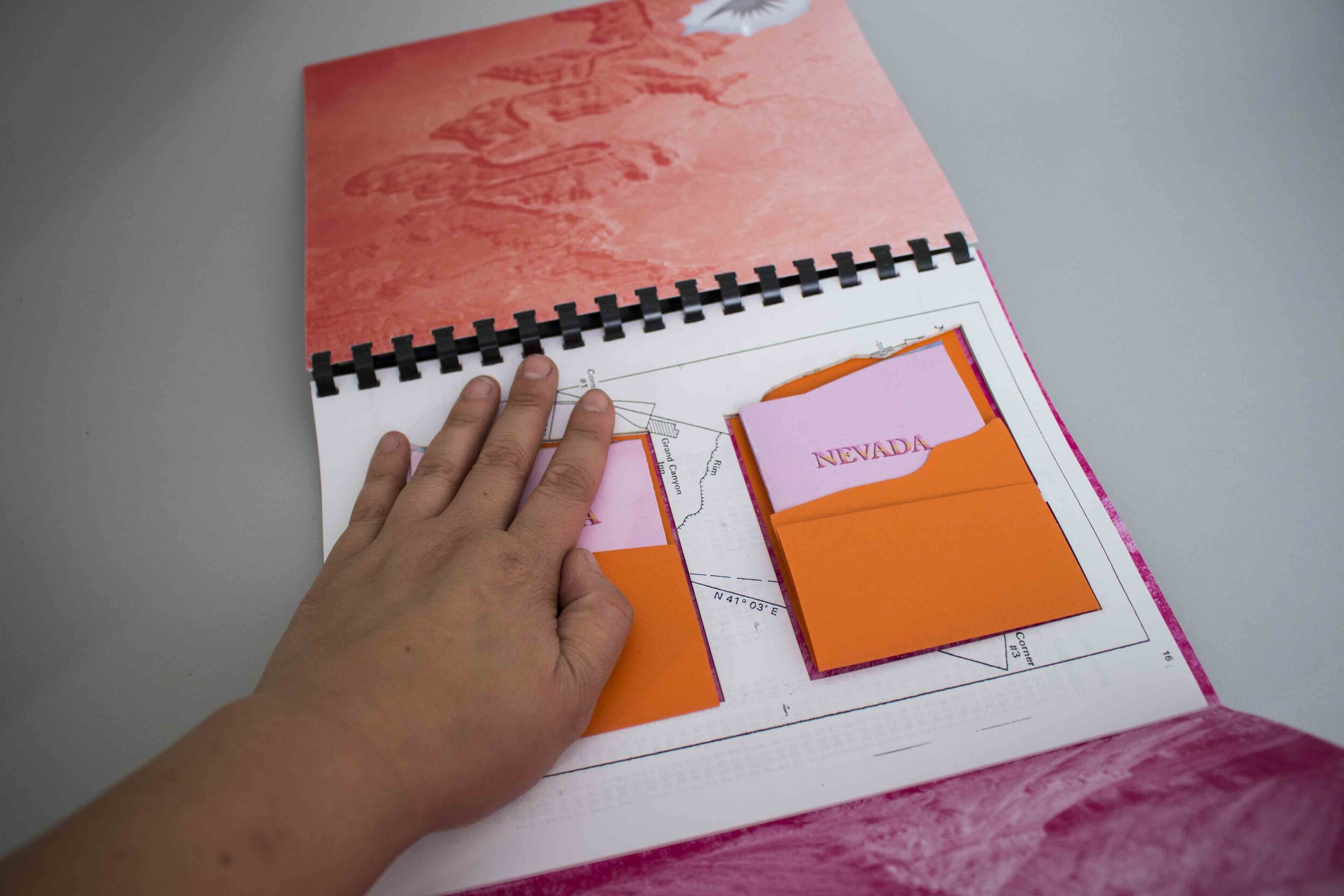
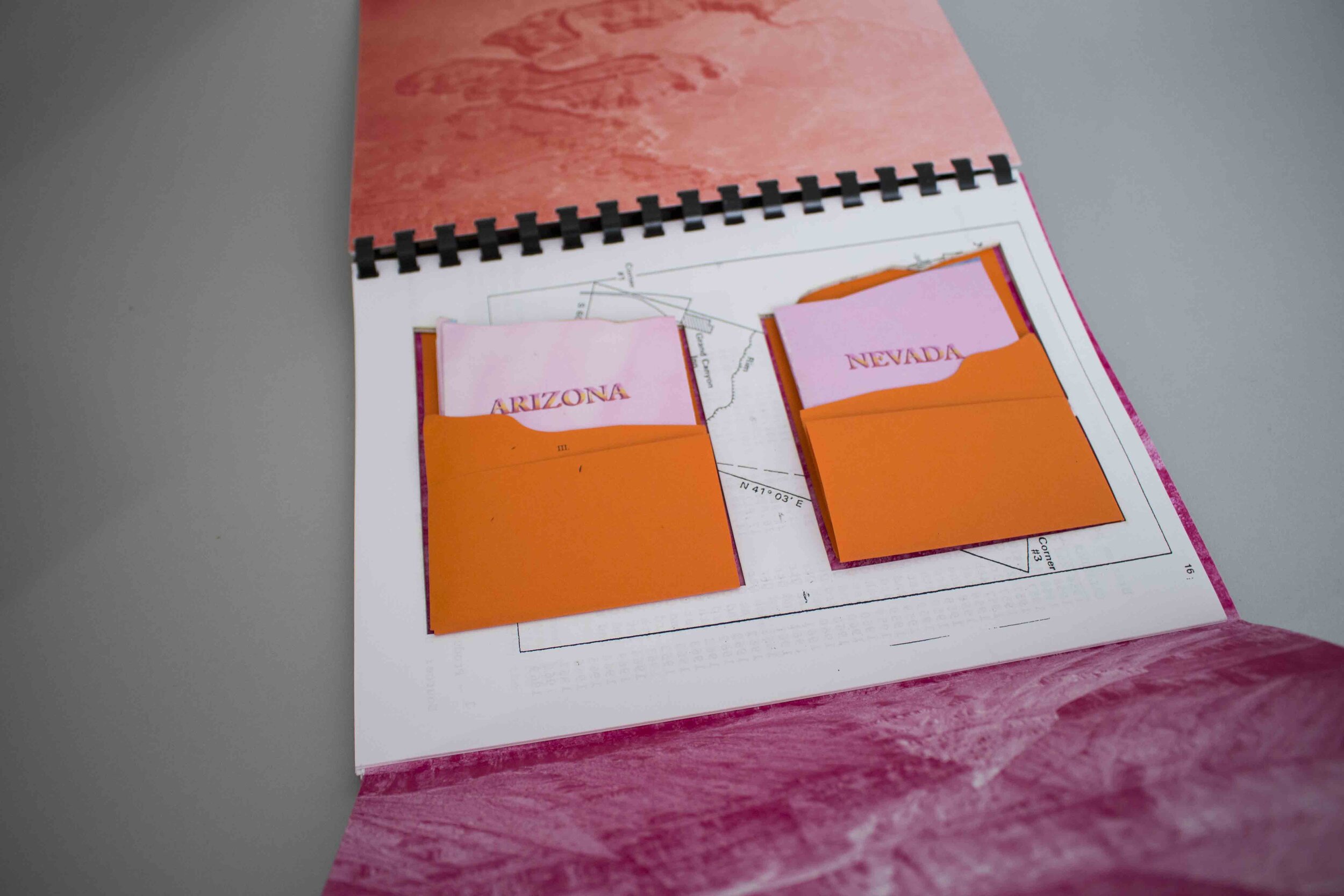
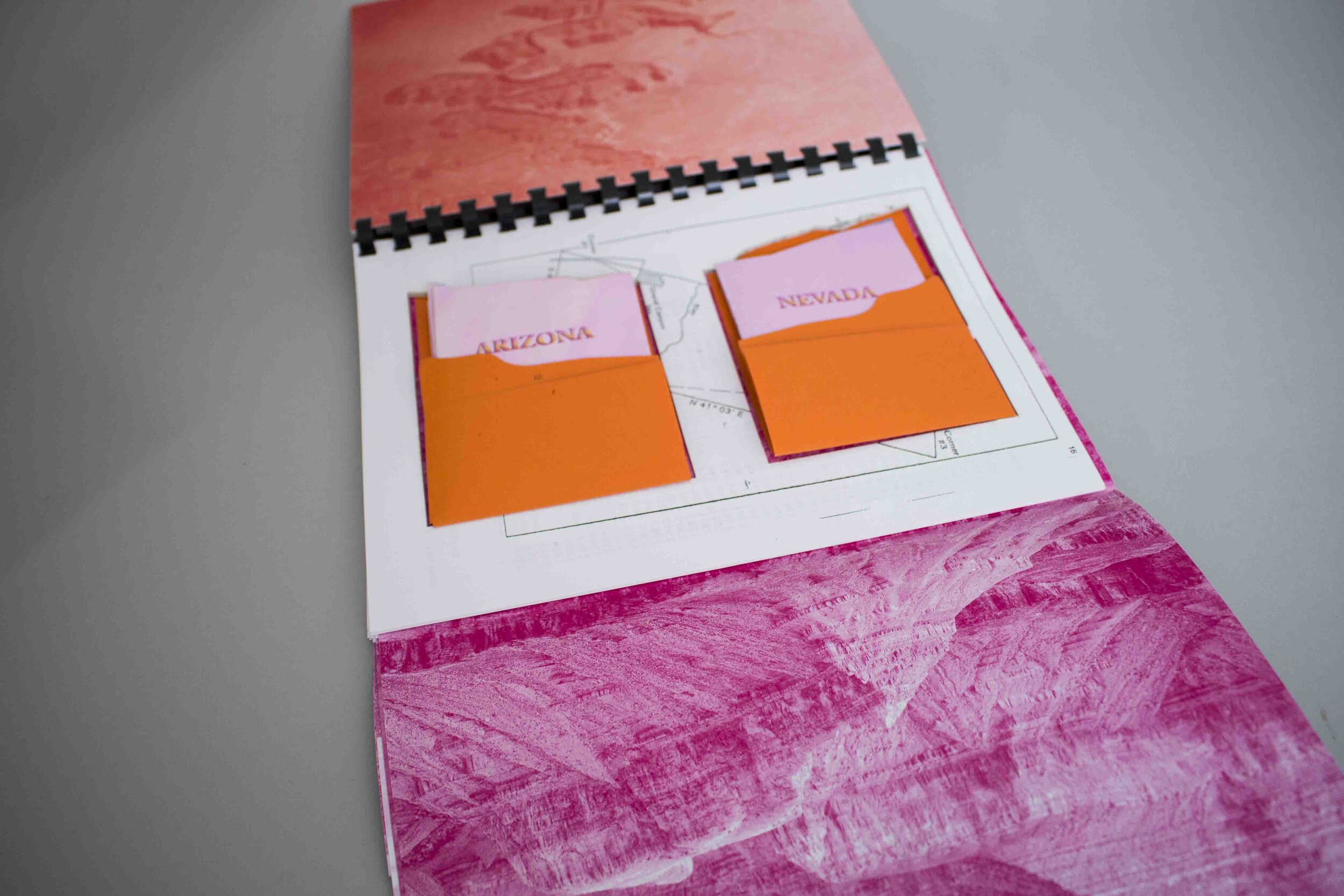
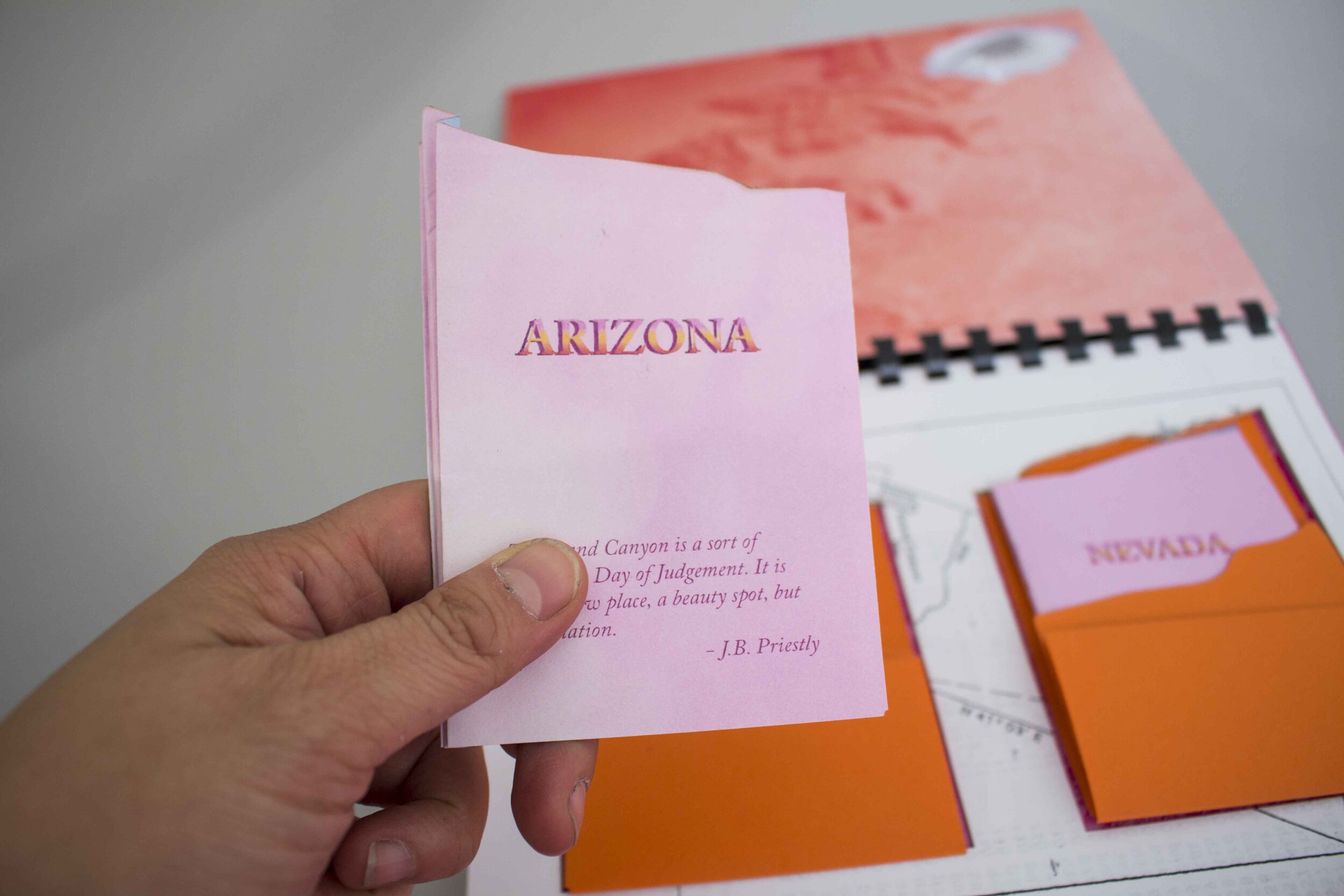
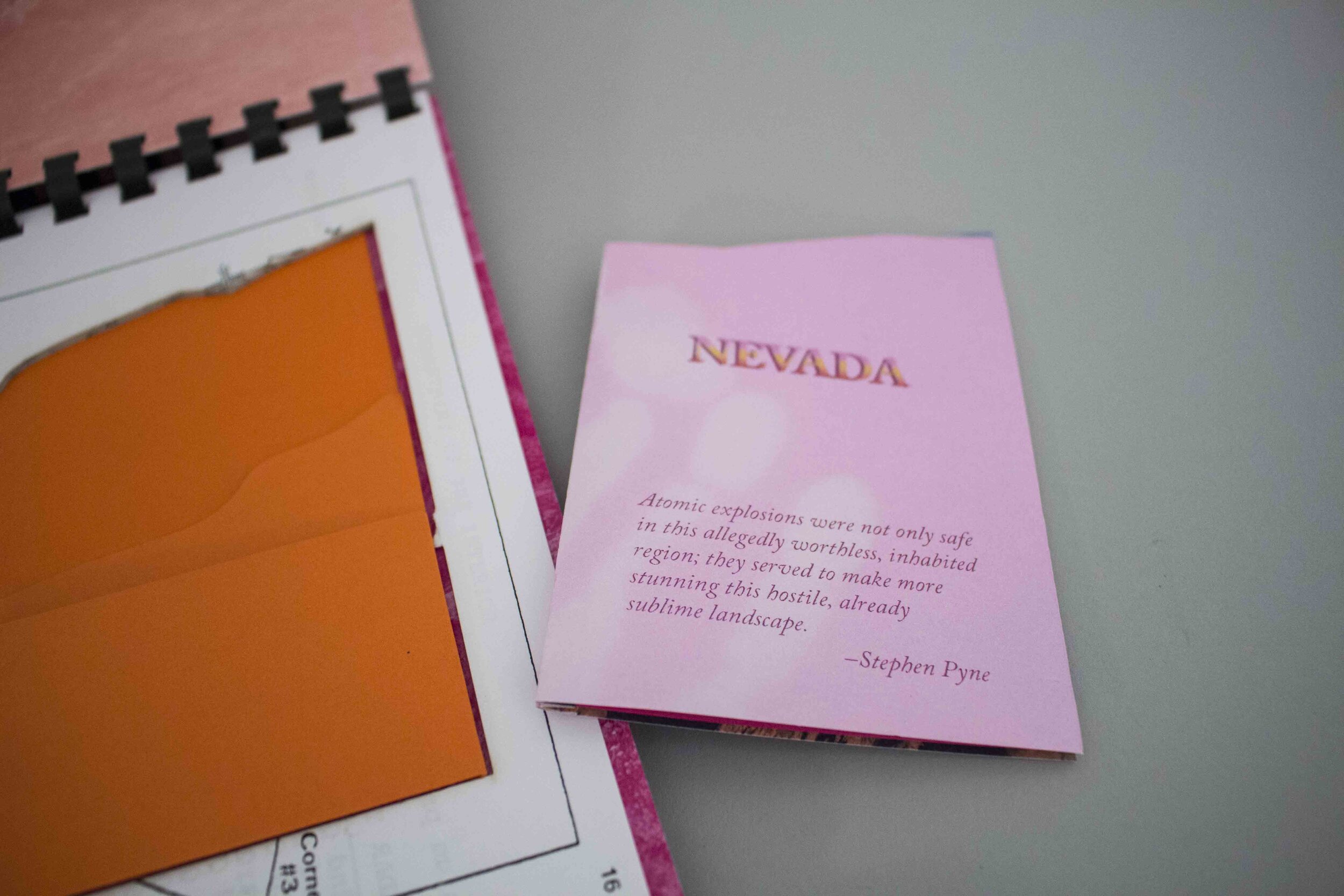
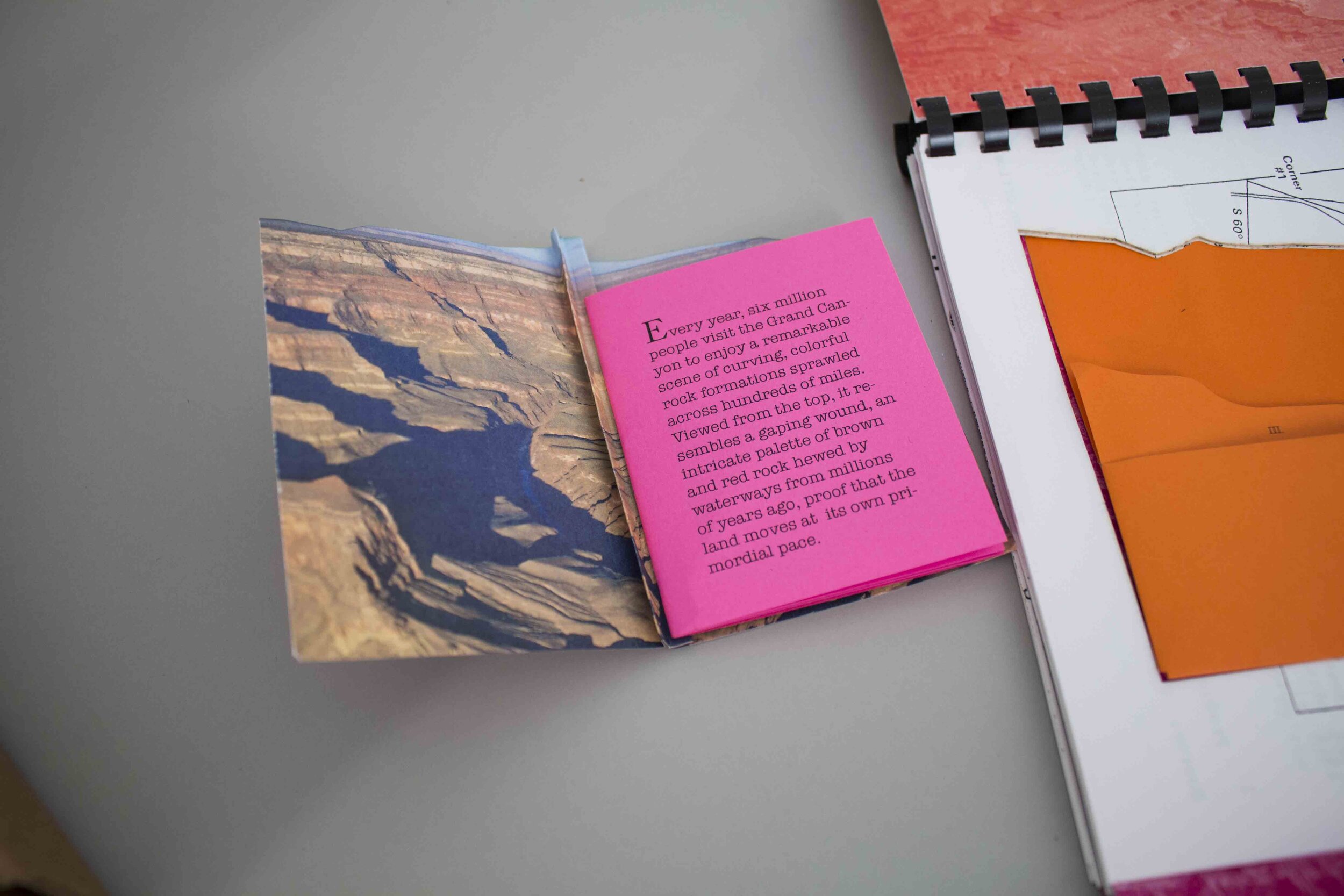
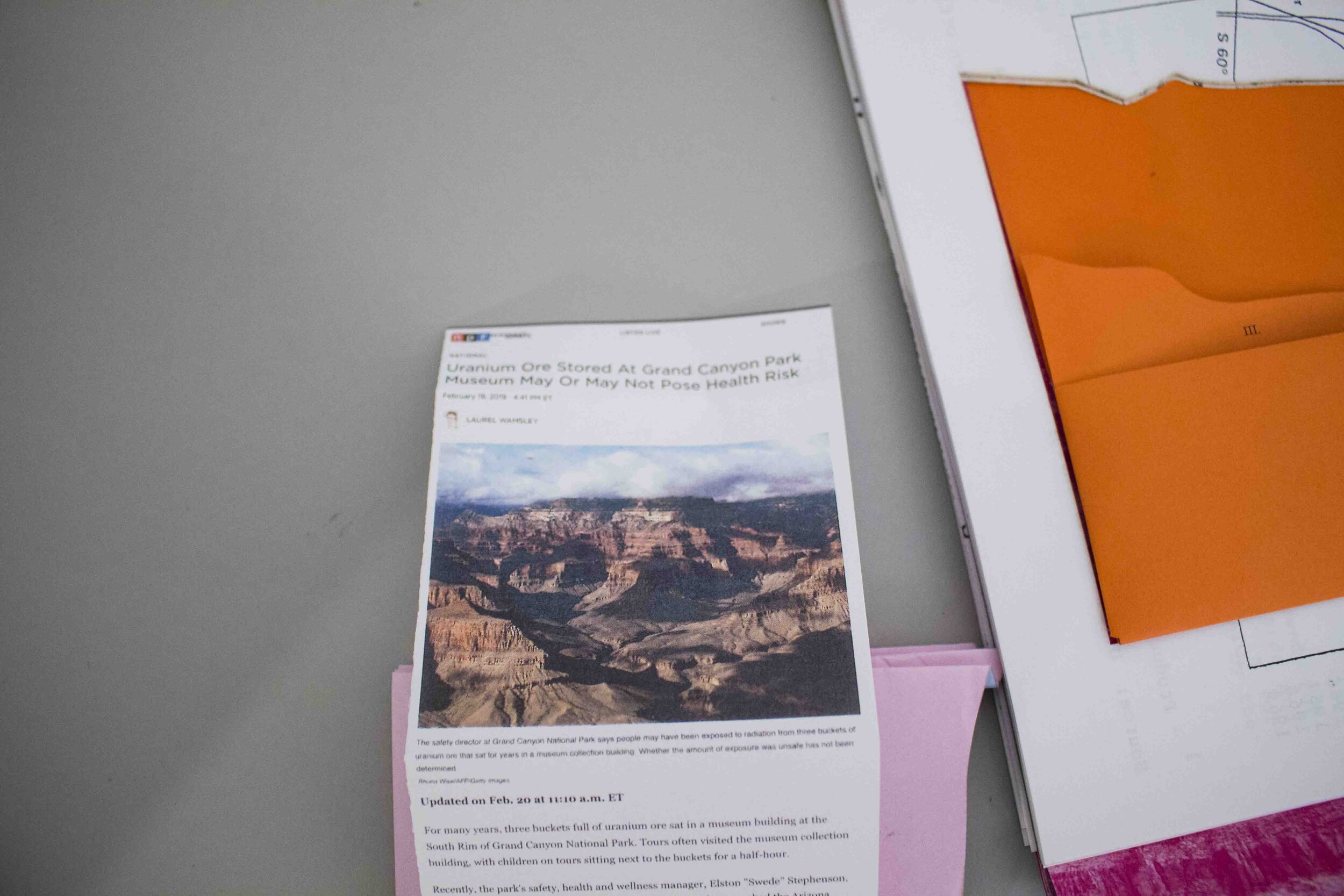
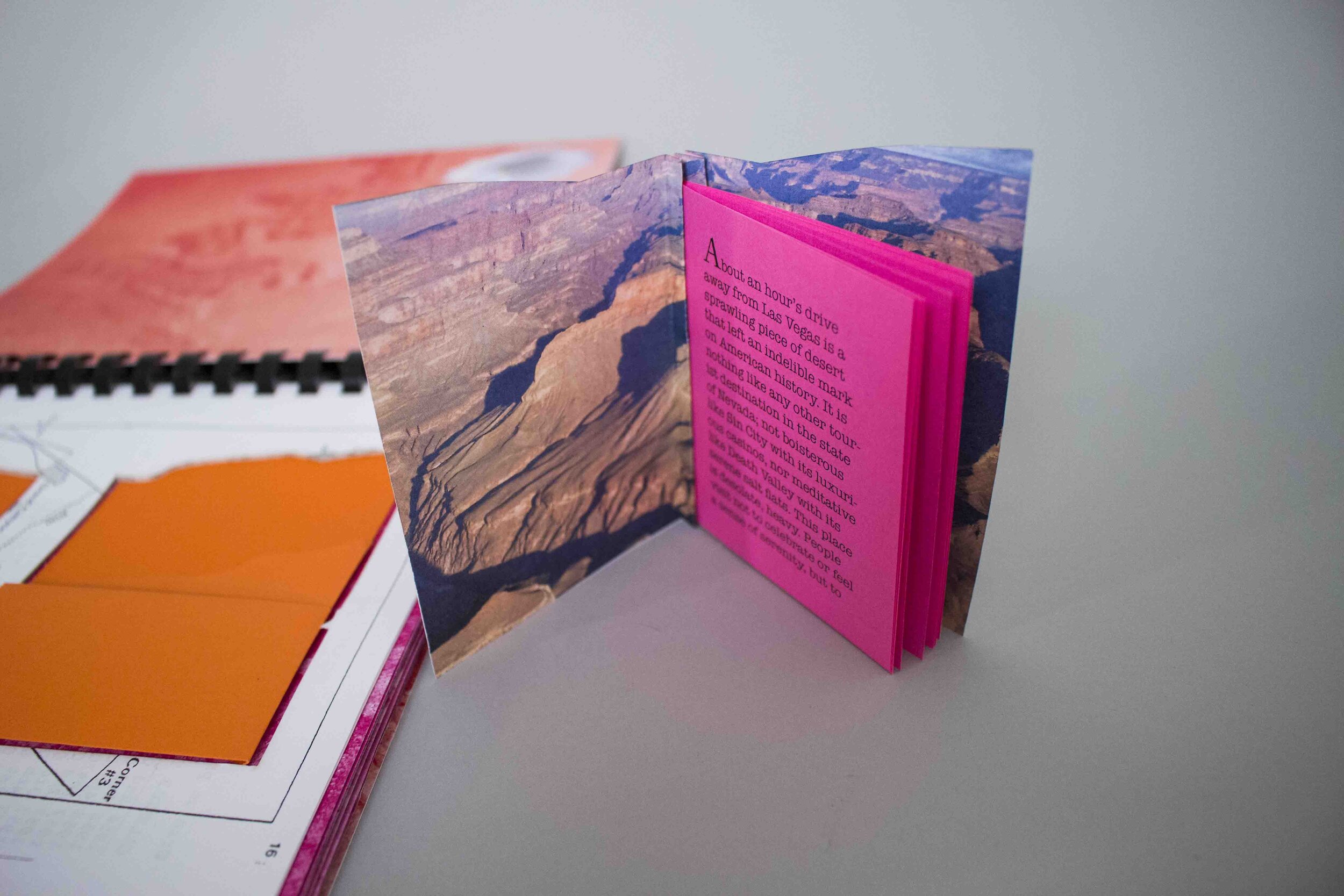
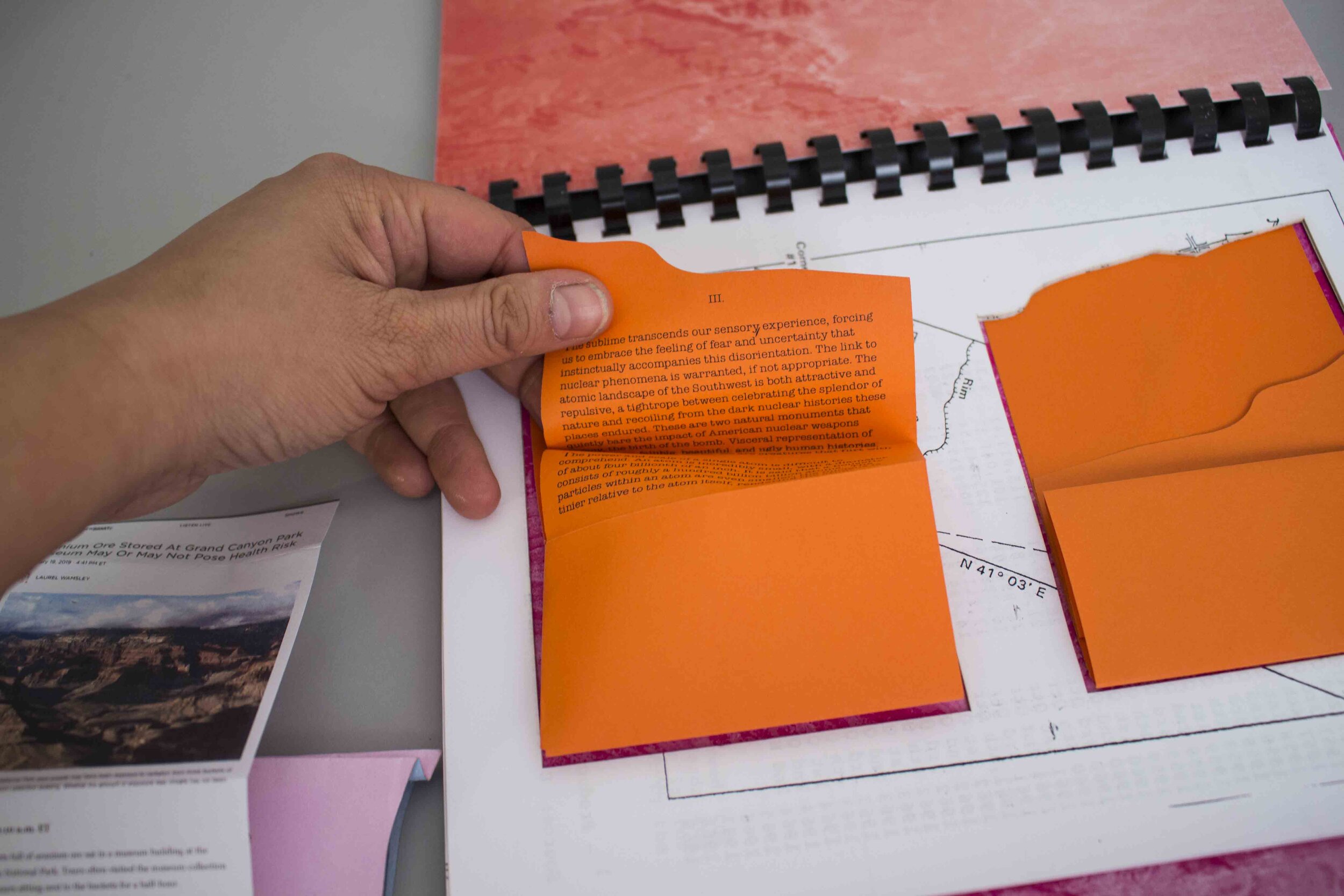
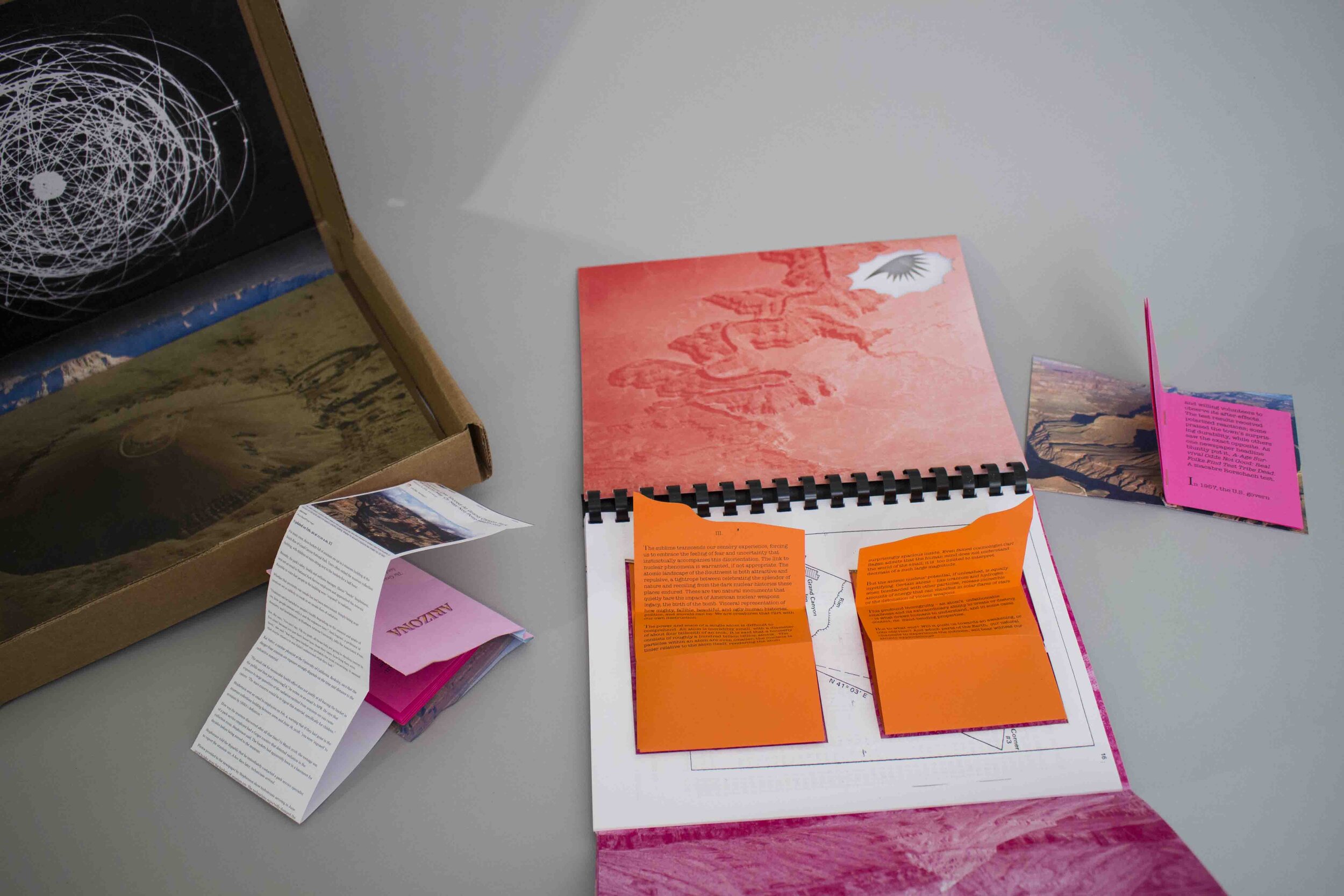
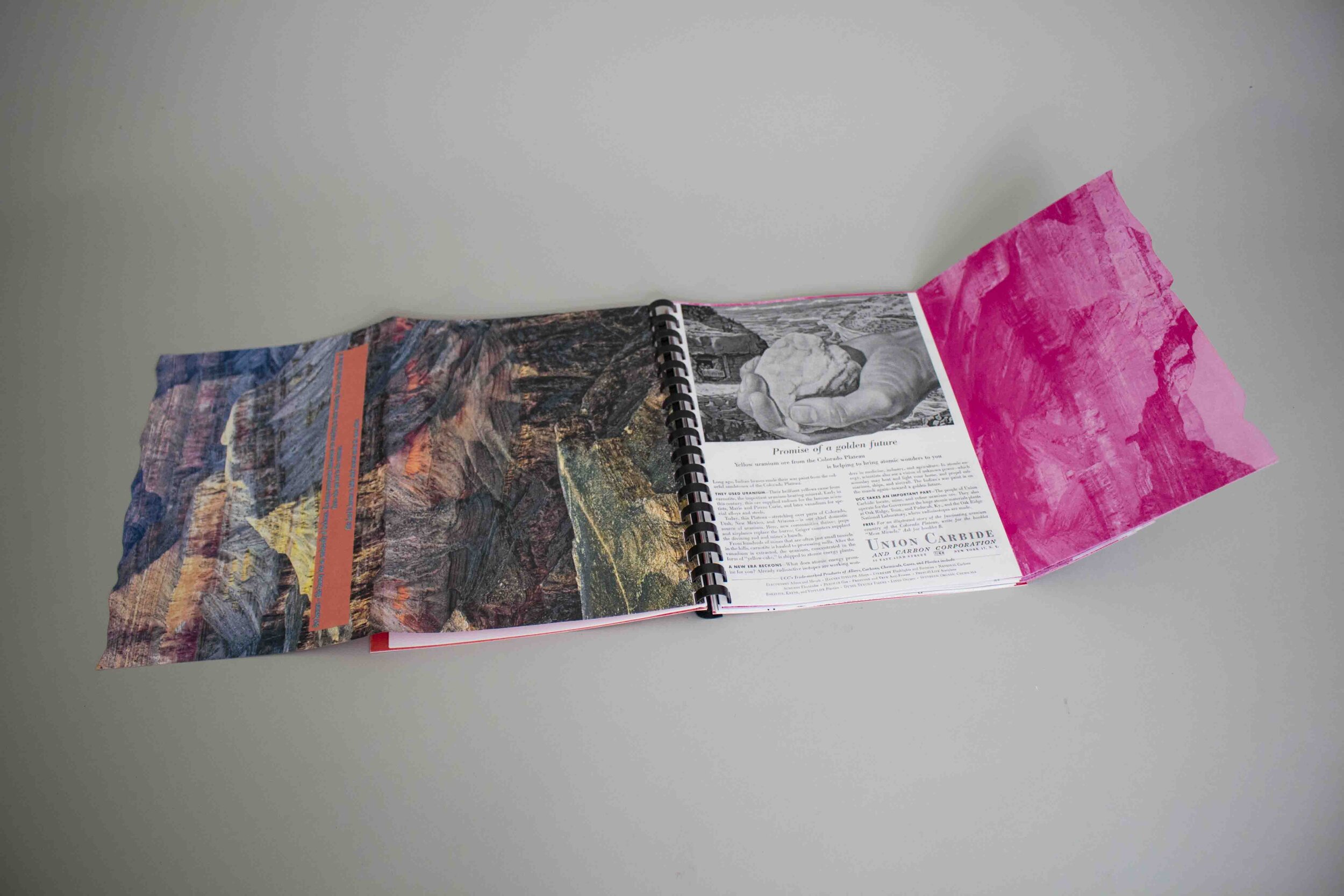


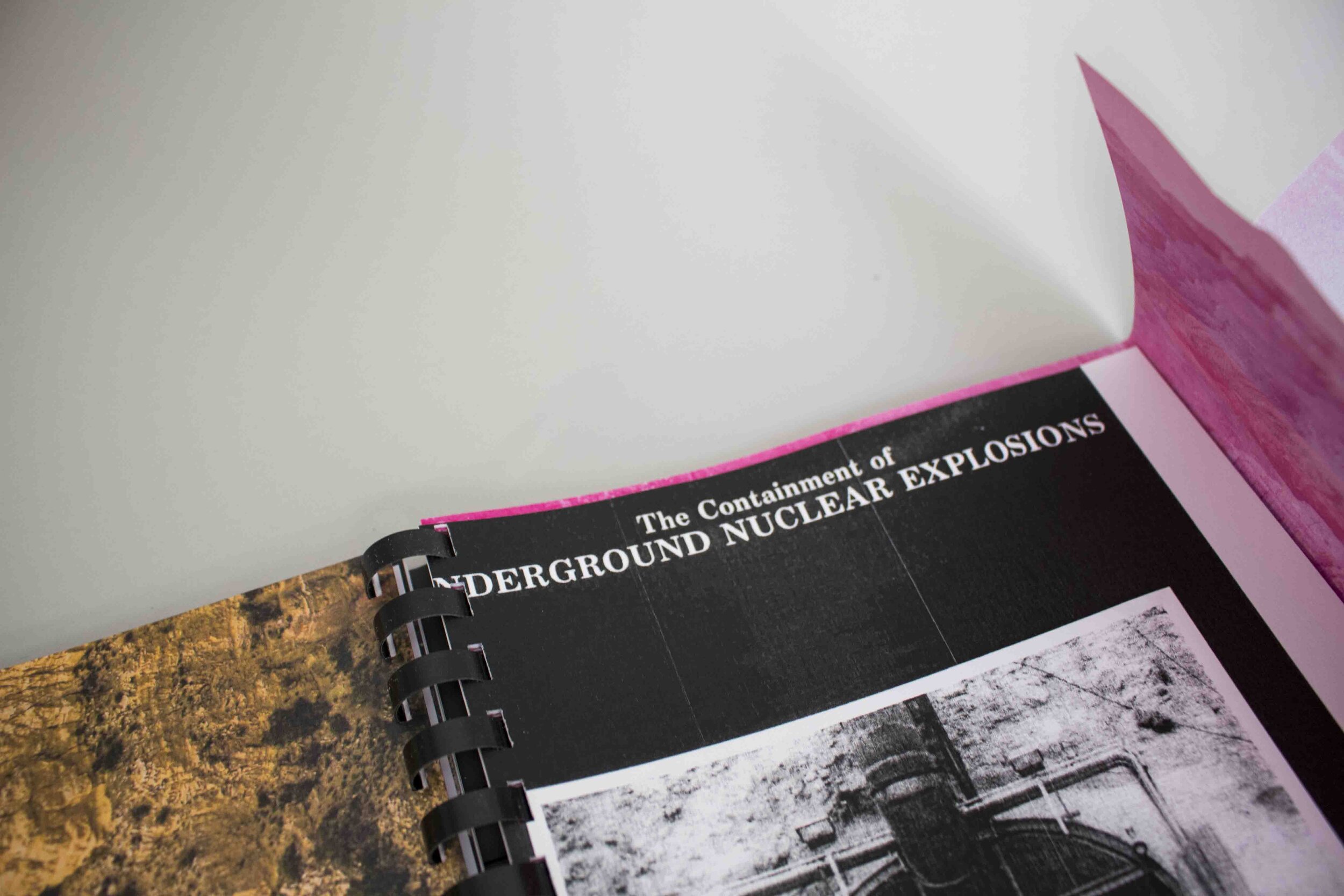
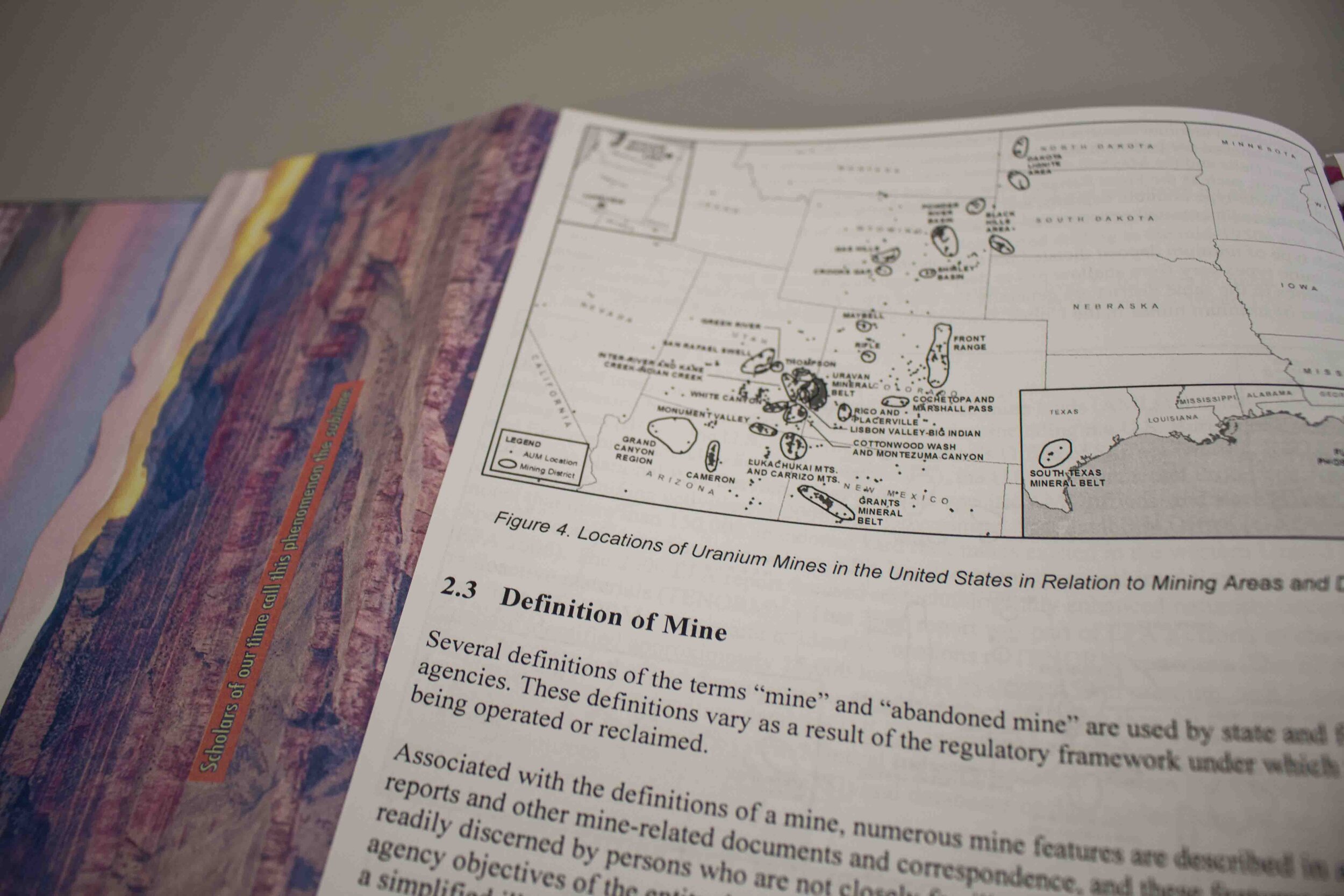
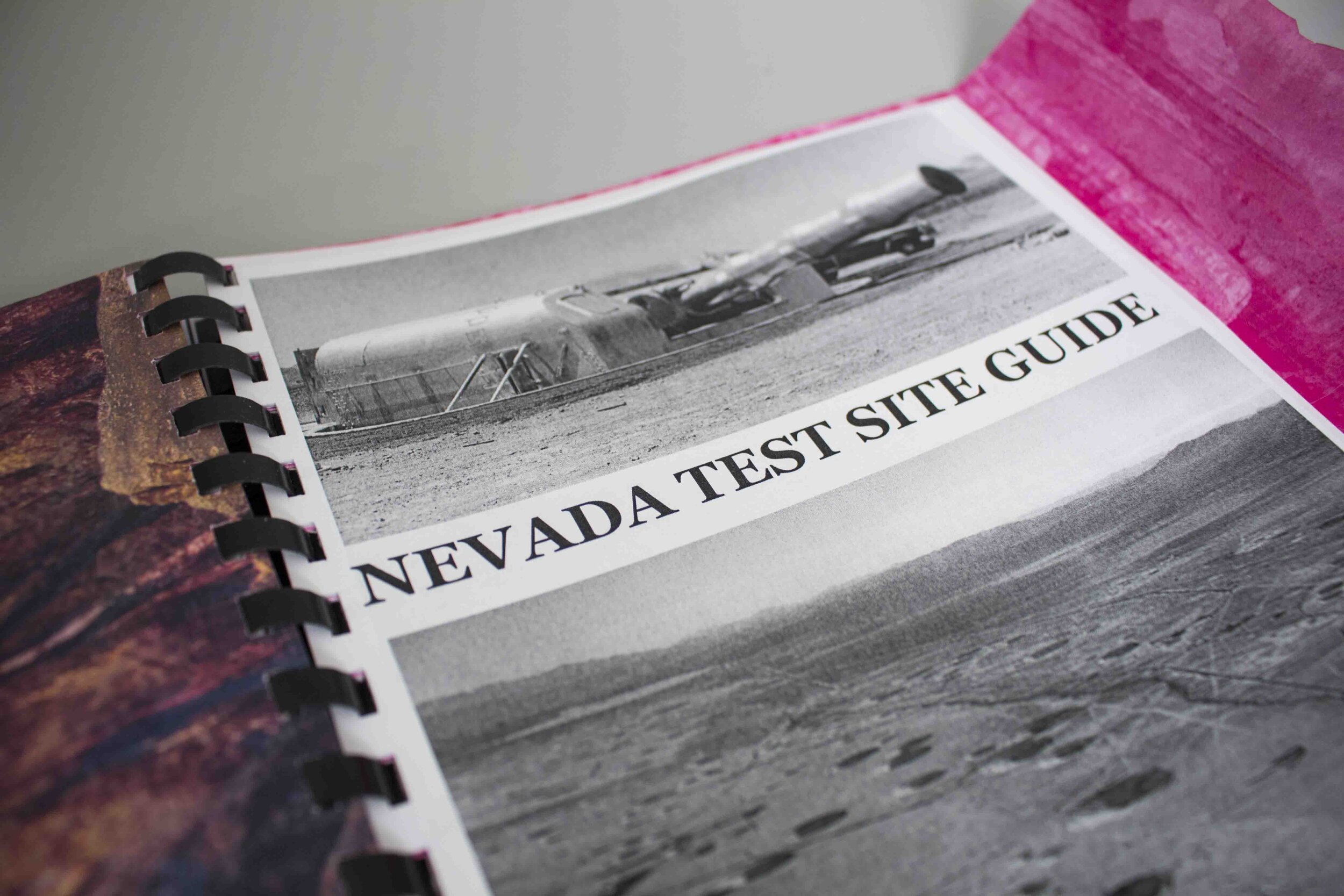
The Atomic Sublime is a book about the landscapes that captivate and haunt us, not only because of their ineffable beauty and scale, but because of the dark nuclear histories they hold. The book centers around two places in the American Southwest– the Grand Canyon and the Nevada Test Site -- and the role they played in developing U.S. nuclear weapons. The book is part of the Illuminating Radioactivity project, which blends policy, technical, and creative expertise to produce compelling resources about nuclear science, policy, and history.
Essays by Lovely Umayam
Art by Tammy Nguyen
Technical Advice by Karen Hogue and Jennifer Wagner
Creative Advice by Adriel Luis
This book was produced by Passenger Pigeon Press using the technologies of photocopy, laser cutting, and hand-set type with foil stamping. Everything was hand assembled. The fonts used include Futura, American Typewriter, and Caslon in multiple styles and sizes. The papers used include cardboard, 90 lb. white cardstock, 20 lb. white textweight, 60 lb. Astrobright Cosmic Orange and Fuschia. The production was overseen by Téa Chai Beer and art direction/ design by Tammy Nguyen. This was an edition of 250.
Sincerest gratitude to all those who provided encouragement and counsel along the way: Michael Krepon, Alex Wellerstein, the Center for Book Arts, and various friends and family who have been anticipating the fruition of this nuclear project. Special thank you to Téa Chai Beer and Katrina Fuller for helping with the production of this book.
This is a creative project by Bombshelltoe and Passenger Pigeon Press. The research, writing, and editing of this project is facilitated through the Stimson Center. Financial support generously provided through the Stevens Institute - Reinventing Civil Defense Project.
